
- AI Essay Writer
- Paraphraser
- AI Text Summarizer
- AI Research Tool
- AI PDF Summarizer
- Outline Generator
- Essay Grader
- Essay Checker
If you ever wondered about how to critique something, a book, a film, or maybe even a research hypothesis, then the answer for you is – to write a critical essay about it. This type of writing revolves around the deep evaluation of the material in front of you. So, in such papers, the goal isn’t to say whether you liked something or not, but rather to analyze it based on evidence and logic. Think of it as taking a step back and asking, “What is really going on here?” and “How did the creator make that happen?”
In a critical essay, you start with a central claim or thesis that makes an argument about the material you’re analyzing. From there, you’ll support your points using evidence, like specific quotes from a book or scenes from a movie. And unlike casual conversations, this type of writing avoids personal opinions or judgments like “I liked it” or “It was boring.” Instead, you’re focused on breaking down the details and exploring themes, techniques, or strategies used by the creator.
For example, rather than saying “Charlie was so lucky to find a Golden Ticket” after watching Willy Wonka and the Chocolate Factory, a critical essay might explore how the film uses the contrast between wealth and morality to make a statement about society.

Writing a Perfect Critical Essay: Here’s What to Do
Writing a critical essay doesn’t have to be overwhelming if you approach it with a solid plan. Here’s a step-by-step breakdown of how you can structure your writing process to create a thoughtful, well-organized essay that impresses your readers (and earns you those high grades).
Choose and Fully Understand Your Topic
First things first—you need to select something to write about. This can be a movie, book, piece of music, or artwork. Just make sure it’s something you’re interested in and that you understand well. If your topic is assigned, spend time getting familiar with it. Watch the film or read the book a couple of times, and take notes on key themes, techniques, or elements that stand out.
Gather Your Sources
You’ll need evidence to support your analysis, so gather relevant material. Use scholarly sources like journal articles, books, and credible websites to back up your claims. The trick here is not just collecting information but understanding it. As such, if you’re writing about a novel, find analyses that discuss the author’s themes or techniques, and use that to build your argument. And remember to always keep track of your sources for proper citations later!
Develop a Strong Thesis Statement
Once you’ve done your research, it’s time to craft your thesis statement. This is the central argument of your essay, and everything you write should connect back to it. For example, if you’re analyzing the use of imagery in Get Out , your thesis might argue how the recurring image of the teacup symbolizes the control and manipulation of Black bodies in the film, reinforcing themes of power and exploitation. Keep your thesis specific, focused, and arguable ad it will carry your entire essay.
Create an Outline
Before you start writing, create an outline to organize your ideas. A typical critical essay includes an introduction, body paragraphs, and a conclusion. In the body, each paragraph should focus on a different point that supports your thesis. For instance, one paragraph might discuss symbolism, another might analyze character development, and a third could cover narrative techniques. Outlining helps you see the flow of your writing and make sure that each point has enough evidence to back it up.
Write the Body Paragraphs First
With your outline in place, begin writing the body paragraphs. Each paragraph should start with a topic sentence that introduces the main point, followed by evidence (quotes, examples, or facts) to support it. After presenting the evidence, analyze it and explain how it ties into your thesis. If you’re analyzing a movie, for example, you might focus one paragraph on how the director uses camera angles to create tension in a scene. Stay focused and make sure everything ties back to your central argument.
Write the Conclusion
After finishing the body paragraphs, write the conclusion. This is where you sum up the key points of your essay and restate your thesis in light of the evidence you’ve presented. The conclusion should not introduce new information but instead reinforce your argument, leaving the reader with a clear understanding of your analysis.
Write the Introduction Last
Now that you’ve got the bulk of the essay written, it’s time to finally build the introduction. Start with a hook to grab the reader’s attention—a bold statement, an intriguing question, or a surprising fact can work well. Then, provide some background information to set the context for your analysis, and finish with your thesis statement that you have already created. Writing the introduction last allows you to make sure it aligns perfectly with the rest of your essay and clearly presents your argument.
Revise, Edit, and Proofread
You’ve got your first draft—congrats! Now, it’s time to bring it to perfection. Read through your essay a few times to improve clarity and flow. Check if all your points are well-supported and if your argument makes sense from start to finish. Edit for grammar, spelling, and style errors, and make sure all citations are correctly formatted. Taking this step seriously can make a huge difference in the overall quality of your essay (and in your grade as well).
Critical Essay Example: Proper Structure & Outline
Now, if you still feel kind of lost in all this information, don’t worry too much. Below you will find an example of what a well-organized critical essay can look like. Check it out to gain some inspiration and you will definitely be able to jump right into the writing process in no time at all.
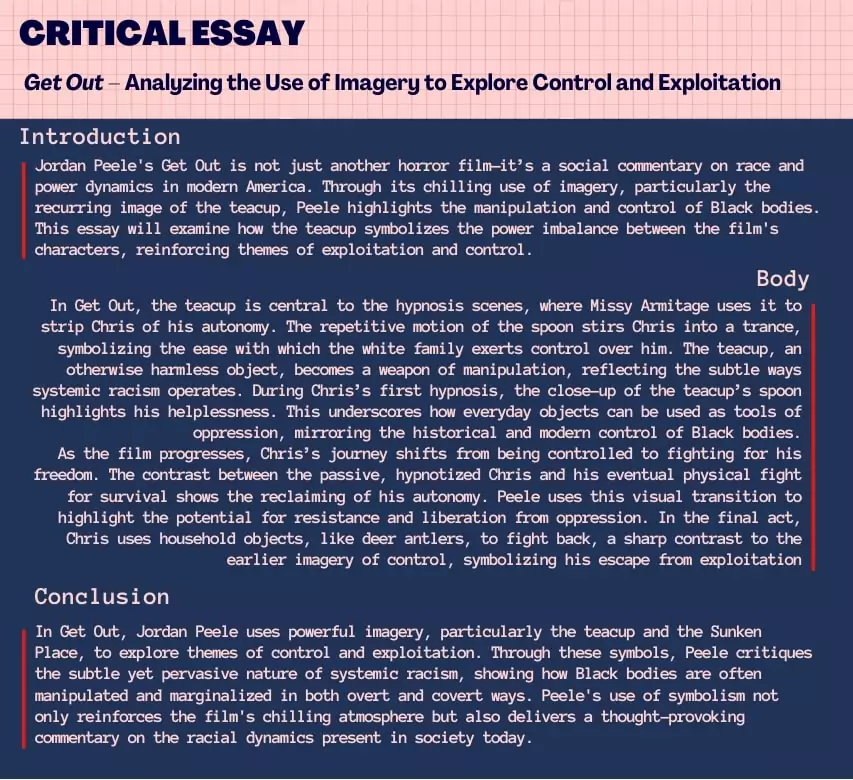
How should I start a critical essay?
To start a critical essay, begin with an engaging introduction that grabs the reader’s attention. You can use a hook, such as an interesting fact, a bold statement, or even a thought-provoking question. After the hook, provide some background information on the topic you’re discussing to set the stage. Finally, end the introduction with a clear thesis statement outlining the main argument or point you’ll analyze. This thesis will guide your essay and tell readers what to expect from your analysis.
What is a critical essay and example?
A critical essay is a type of writing where you analyze and evaluate a piece of work, such as a book, film, painting, or even a theory. This type of writing is dedicated to exploring the deeper meanings, strengths, weaknesses, and overall impact of its subject. For example, if you’re writing a critical essay about The Great Gatsby, you wouldn’t just summarize the plot—you’d dive into how F. Scott Fitzgerald uses symbolism and themes like the American Dream to convey larger messages.
What is the layout of a critical essay?
The layout of a critical essay usually follows a standard structure: an introduction, body paragraphs, and a conclusion. In the introduction, you present the topic and your thesis. The body paragraphs are where you break down the main points of your analysis, using evidence to support your claims. The conclusion ties everything together, summarizing your key points and restating your thesis in light of the evidence you’ve discussed.
What are the parts of a critical essay?
A critical essay has three main parts: the introduction, body paragraphs, and conclusion.
- Introduction : This is where you introduce the work you’re analyzing and present your thesis.
- Body Paragraphs : These are the meat of your essay, where you break down your analysis into different points, using evidence and examples to support your arguments.
- Conclusion : Here, you wrap up your analysis, summarizing the main points and reinforcing how they support your thesis.
Related Posts

How to Write a Video Essay

- November 1, 2024
- Comments Off on How to Write a Video Essay
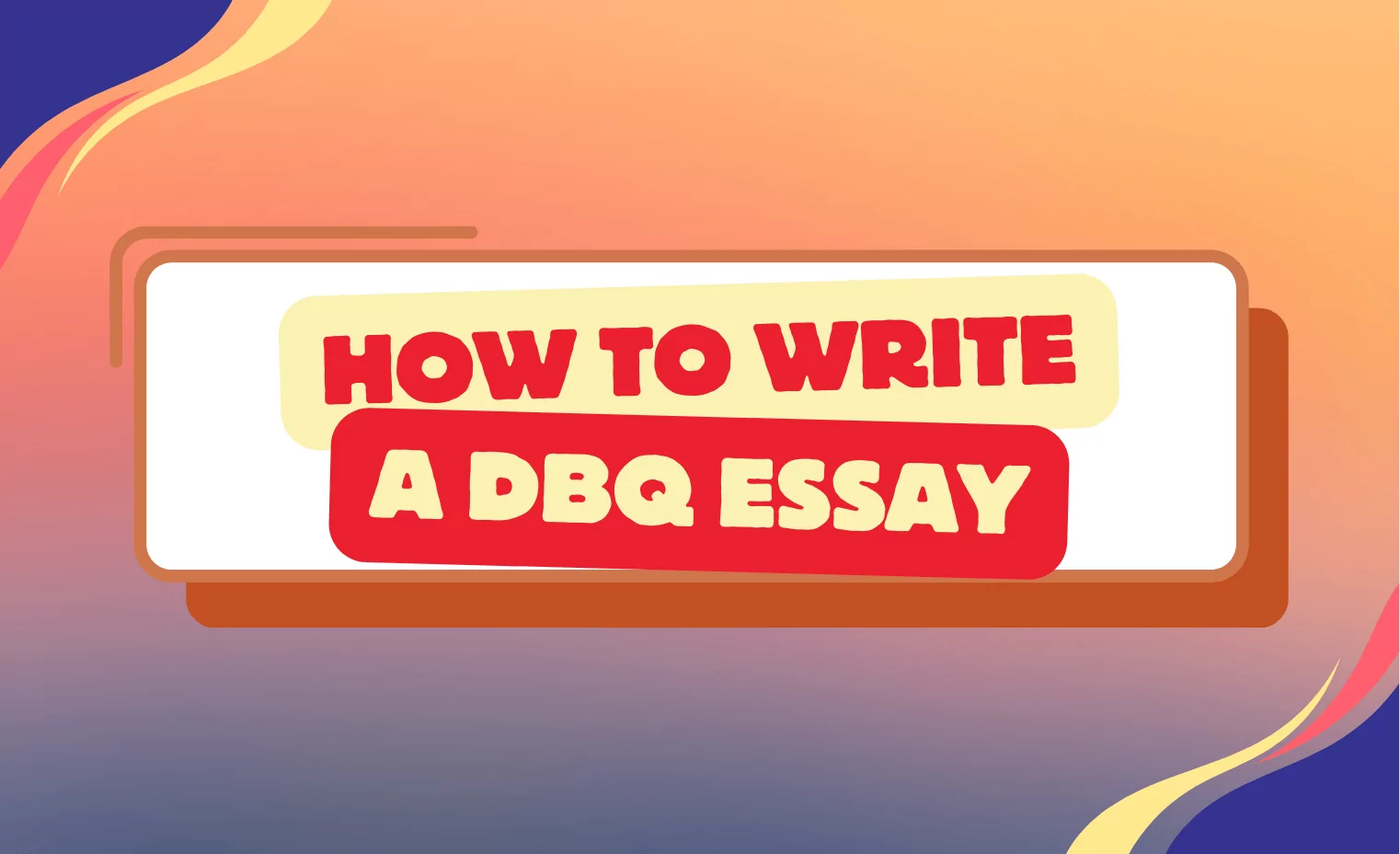
How to Write a DBQ Essay
- Comments Off on How to Write a DBQ Essay
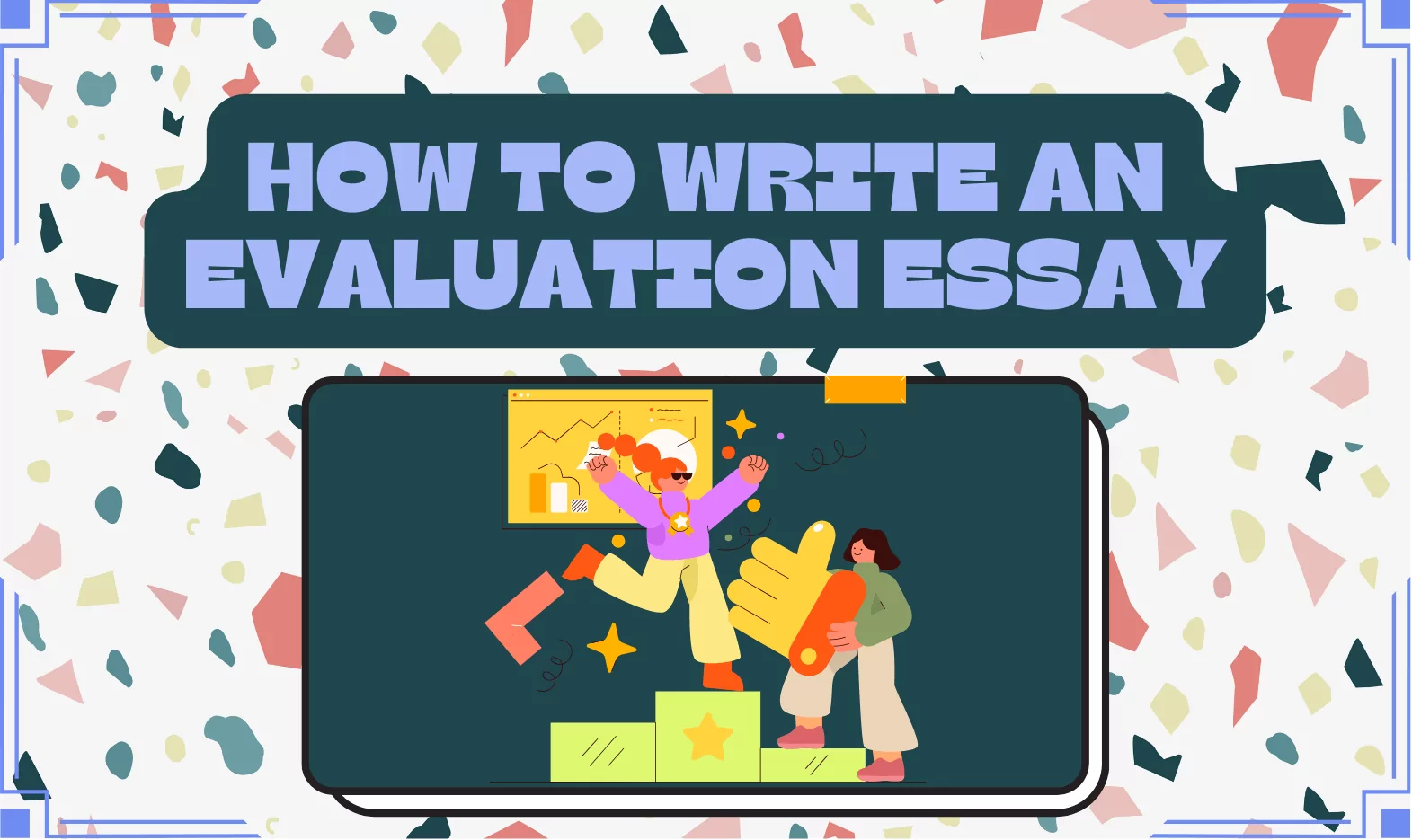
How to Write an Evaluation Essay
- October 3, 2024
- Comments Off on How to Write an Evaluation Essay
Are you ready to write top-quality essays?
Boost Your Essay Writing Skills and Achievements with Textero AI
- No credit card required to start
- Cancel anytime
- 4 different tools to explore
- Humanities ›
- English Grammar ›
How to Write a Critical Essay
Hill Street Studios / Getty Images
- An Introduction to Punctuation
Olivia Valdes was the Associate Editorial Director for ThoughtCo. She worked with Dotdash Meredith from 2017 to 2021.
:max_bytes(150000):strip_icc():format(webp)/Olivia-Valdes_WEB1-1e405fc799d9474e9212215c4f21b141.jpg)
- B.A., American Studies, Yale University
A critical essay is a form of academic writing that analyzes, interprets, and/or evaluates a text. In a critical essay, an author makes a claim about how particular ideas or themes are conveyed in a text, then supports that claim with evidence from primary and/or secondary sources.
In casual conversation, we often associate the word "critical" with a negative perspective. However, in the context of a critical essay, the word "critical" simply means discerning and analytical. Critical essays analyze and evaluate the meaning and significance of a text, rather than making a judgment about its content or quality.
What Makes an Essay "Critical"?
Imagine you've just watched the movie "Willy Wonka and the Chocolate Factory." If you were chatting with friends in the movie theater lobby, you might say something like, "Charlie was so lucky to find a Golden Ticket. That ticket changed his life." A friend might reply, "Yeah, but Willy Wonka shouldn't have let those raucous kids into his chocolate factory in the first place. They caused a big mess."
These comments make for an enjoyable conversation, but they do not belong in a critical essay. Why? Because they respond to (and pass judgment on) the raw content of the movie, rather than analyzing its themes or how the director conveyed those themes.
On the other hand, a critical essay about "Willy Wonka and the Chocolate Factory" might take the following topic as its thesis: "In 'Willy Wonka and the Chocolate Factory,' director Mel Stuart intertwines money and morality through his depiction of children: the angelic appearance of Charlie Bucket, a good-hearted boy of modest means, is sharply contrasted against the physically grotesque portrayal of the wealthy, and thus immoral, children."
This thesis includes a claim about the themes of the film, what the director seems to be saying about those themes, and what techniques the director employs in order to communicate his message. In addition, this thesis is both supportable and disputable using evidence from the film itself, which means it's a strong central argument for a critical essay .
Characteristics of a Critical Essay
Critical essays are written across many academic disciplines and can have wide-ranging textual subjects: films, novels, poetry, video games, visual art, and more. However, despite their diverse subject matter, all critical essays share the following characteristics.
- Central claim . All critical essays contain a central claim about the text. This argument is typically expressed at the beginning of the essay in a thesis statement , then supported with evidence in each body paragraph. Some critical essays bolster their argument even further by including potential counterarguments, then using evidence to dispute them.
- Evidence . The central claim of a critical essay must be supported by evidence. In many critical essays, most of the evidence comes in the form of textual support: particular details from the text (dialogue, descriptions, word choice, structure, imagery, et cetera) that bolster the argument. Critical essays may also include evidence from secondary sources, often scholarly works that support or strengthen the main argument.
- Conclusion . After making a claim and supporting it with evidence, critical essays offer a succinct conclusion. The conclusion summarizes the trajectory of the essay's argument and emphasizes the essays' most important insights.
Tips for Writing a Critical Essay
Writing a critical essay requires rigorous analysis and a meticulous argument-building process. If you're struggling with a critical essay assignment, these tips will help you get started.
- Practice active reading strategies . These strategies for staying focused and retaining information will help you identify specific details in the text that will serve as evidence for your main argument. Active reading is an essential skill, especially if you're writing a critical essay for a literature class.
- Read example essays . If you're unfamiliar with critical essays as a form, writing one is going to be extremely challenging. Before you dive into the writing process, read a variety of published critical essays, paying careful attention to their structure and writing style. (As always, remember that paraphrasing an author's ideas without proper attribution is a form of plagiarism .)
- Resist the urge to summarize . Critical essays should consist of your own analysis and interpretation of a text, not a summary of the text in general. If you find yourself writing lengthy plot or character descriptions, pause and consider whether these summaries are in the service of your main argument or whether they are simply taking up space.
- Critical Analysis in Composition
- Writing About Literature: Ten Sample Topics for Comparison & Contrast Essays
- What Is a Critique in Composition?
- Definition and Examples of Analysis in Composition
- A Critical Analysis of George Orwell's 'A Hanging'
- What Are the Different Types and Characteristics of Essays?
- literary present (verbs)
- Book Report: Definition, Guidelines, and Advice
- personal statement (essay)
- Definition Examples of Collage Essays
- Definition and Examples of Evaluation Essays
- Composition Type: Problem-Solution Essays
- What Is Plagiarism?
- The Power and Pleasure of Metaphor
- Quotes About Close Reading
- What Is a Compelling Introduction?
- PRO Courses Guides New Tech Help Pro Expert Videos About wikiHow Pro Upgrade Sign In
- EDIT Edit this Article
- EXPLORE Tech Help Pro About Us Random Article Quizzes Request a New Article Community Dashboard This Or That Game Forums Popular Categories Arts and Entertainment Artwork Books Movies Computers and Electronics Computers Phone Skills Technology Hacks Health Men's Health Mental Health Women's Health Relationships Dating Love Relationship Issues Hobbies and Crafts Crafts Drawing Games Education & Communication Communication Skills Personal Development Studying Personal Care and Style Fashion Hair Care Personal Hygiene Youth Personal Care School Stuff Dating All Categories Arts and Entertainment Finance and Business Home and Garden Relationship Quizzes Cars & Other Vehicles Food and Entertaining Personal Care and Style Sports and Fitness Computers and Electronics Health Pets and Animals Travel Education & Communication Hobbies and Crafts Philosophy and Religion Work World Family Life Holidays and Traditions Relationships Youth
- Browse Articles
- Learn Something New
- Quizzes Hot
- Happiness Hub
- This Or That Game
- Train Your Brain
- Explore More
- Support wikiHow
- About wikiHow
- Log in / Sign up
- Education and Communications
- College University and Postgraduate
- Academic Writing
How to Write a Critical Essay
Last Updated: November 15, 2024 Fact Checked
This article was co-authored by Megan Callaghan, PhD . Megan Morgan is an Academic Advising and Writing expert based in Augusta, Georgia. She has over 7 years of university teaching experience and more than 15 years of professional editing experience. She works as an intern for the Law Library of Congress, and is also a Professional Writing Center Consultant at Augusta University. Her key academic interests involve reference and subject librarianship, government information, and information organization. She provides personalized writing instruction, workshops, and support for AU students, faculty, and staff. Previously, she worked as a Graduate Program Administrator at the University of Georgia’s School of Public and International Affairs. She was a Graduate Advisor for three degrees in the departments of Political Science and International Affairs at the University of Georgia College of Arts and Sciences. She earned her Master’s in Library and Information Science from Valdosta State University. She also received both a PhD and MA in English from The University of Georgia, and a BA in English and Creative Writing from the Mississippi University for Women. She wrote her PhD dissertation on narrative structure and social change in novels by 18th-century British women writers. There are 9 references cited in this article, which can be found at the bottom of the page. This article has been fact-checked, ensuring the accuracy of any cited facts and confirming the authority of its sources. This article has been viewed 1,166,918 times.
The goal of a critical essay is to analyze a book, film, article, painting, or event and support your argument with relevant details. When writing a paper like this, you will have to come up with an interpretation of your own and then use facts or evidence from the work or other sources to prove that your interpretation is acceptable. A critical essay on a book, for example, might focus on the tone and how that influences the meaning of the book overall and would use quotations from the book to support the thesis. This type of paper requires careful planning and writing, but is often a creative way to engage with a subject that you are interested in and can be very rewarding!
Preparing to Write a Critical Essay

- Get to know the text inside and out by reading and rereading it. If you have been asked to write about a visual text like a film or piece of art, watch the film multiple times or view the painting from various angles and distances.

- What is the text about?
- What are the main ideas?
- What is puzzling about the text?
- What is the purpose of this text?
- Does the text accomplish its purpose? If not, why not? Is so, how so? Don't: summarize the plot — you should already be familiar with it. Do: jot down thoughts that may guide your paper: Does he mean __? Does this connect to __?

- Your solution to the problem should help you to develop a focus for your essay, but keep in mind that you do not need to have a solid argument about your text at this point. As you continue to think about the text, you will move closer to a focus and a thesis for your critical analysis essay. Don't: read the author's mind: Mary Shelley intended Frankenstein's monster to be more likable because... Do: phrase it as your own interpretation: Frankenstein's monster is more sympathetic than his creator, leading the reader to question who the true monster really is.
Conducting Research

- Books, articles from scholarly journals, magazine articles, newspaper articles, and trustworthy websites are some sources that you might consider using.
- Use your library’s databases rather than a general internet search. University libraries subscribe to many databases. These databases provide you with free access to articles and other resources that you cannot usually gain access to by using a search engine.

- The author and his or her credentials. Choose sources that include an author’s name and that provide credentials for that author. The credentials should indicate something about why this person is qualified to speak as an authority on the subject. For example, an article about a medical condition will be more trustworthy if the author is a medical doctor. If you find a source where no author is listed or the author does not have any credentials, then this source may not be trustworthy. [4] X Research source
- Citations. Think about whether or not this author has adequately researched the topic. Check the author’s bibliography or works cited page. If the author has provided few or no sources, then this source may not be trustworthy. [5] X Research source
- Bias. Think about whether or not this author has presented an objective, well-reasoned account of the topic. How often does the tone indicate a strong preference for one side of the argument? How often does the argument dismiss or disregard the opposition’s concerns or valid arguments? If these are regular occurrences in the source, then it may not be a good choice. [6] X Research source (Note, however, that literary criticism often presents a very strong preference for one reading; this is not usually considered "bias" because the field of literary study is inherently subjective.) Don't: dismiss an author for favoring one point of view. Do: engage critically with their argument and make use of well-supported claims.
- Publication date. Think about whether or not this source presents the most up to date information on the subject. Noting the publication date is especially important for scientific subjects, since new technologies and techniques have made some earlier findings irrelevant. [7] X Research source
- Information provided in the source. If you are still questioning the trustworthiness of this source, cross check some of the information provided against a trustworthy source. If the information that this author presents contradicts one of your trustworthy sources, then it might not be a good source to use in your paper. [8] X Research source

- Clearly indicate when you have quoted a source word for word by putting it into quotation marks and including information about the source such as the author’s name, article or book title, and page number. Don't: highlight a phrase just because it sounds significant or meaningful. Do: highlight phrases that support or undermine your arguments.
Writing Your Essay

- Make sure your thesis provides enough detail. In other words, avoid simply saying that something is "good" or "effective" and say what specifically makes it "good" or "effective." [11] X Trustworthy Source University of North Carolina Writing Center UNC's on-campus and online instructional service that provides assistance to students, faculty, and others during the writing process Go to source
- Place your thesis statement at the end of your first paragraph unless your instructor tells you to place it elsewhere. The end of the first paragraph is the traditional place to provide your thesis in an academic essay.
- For example, here is a multi-sentence thesis statement about the effectiveness and purpose of the movie Mad Max: Fury Road : "Many action films follow the same traditional pattern: a male action hero (usually white and attractive) follows his gut and barks orders at others, who must follow him or die. Mad Max: Fury Road is effective because it turns this pattern on its head. Instead of following the expected progression, the movie offers an action movie with multiple heroes, many of whom are women, thereby effectively challenging patriarchal standards in the Hollywood summer blockbuster." Don't: include obvious facts ( Mad Max was directed by George Miller ) or subjective opinions ( Mad Max is the greatest movie of 2015 ). [12] X Trustworthy Source University of North Carolina Writing Center UNC's on-campus and online instructional service that provides assistance to students, faculty, and others during the writing process Go to source Do: present an argument that you can back up with evidence.

- You may want to use a formal outline structure that uses Roman numerals, Arabic numerals, and letters. Or, you may want to use an informal "mind-map" type of outline, which allows you to gather your ideas before you have a complete idea of how they progress.

- Other good techniques to open an essay include using a specific, evocative detail that links to your larger idea, asking a question that your essay will answer, or providing a compelling statistic.

- If you are writing about a book, provide the name of the work, the author, and a brief summary of the plot.
- If you are writing about a film, provide a brief synopsis.
- If you are writing about a painting or other still image, provide a brief description for your readers.
- Keep in mind that your background information in the first paragraph should lead up to your thesis statement. Explain everything the reader needs to know to understand what your topic is about, then narrow it down until you reach the topic itself.

- Provide a claim at the beginning of the paragraph.
- Support your claim with at least one example from your primary source(s).
- Support your claim with at least one example from your secondary sources.

- Summarize and review your main ideas about the text.
- Explain how the topic affects the reader.
- Explain how your narrow topic applies to a broader theme or observation.
- Call the reader to action or further exploration on the topic.
- Present new questions that your essay introduced. Don't: repeat the same points you made earlier in the essay. Do: refer back to earlier points and connect them into a single argument.
Revising Your Essay

- It is important to begin writing a paper far enough ahead of time to allow yourself a few days or even a week to revise before it is due. If you do not allow yourself this extra time, you will be more prone to making simple mistakes and your grade may suffer as a result. [15] X Research source

- What is your main point? How might you clarify your main point?
- Who is your audience? Have you considered their needs and expectations?
- What is your purpose? Have you accomplished your purpose with this paper?
- How effective is your evidence? How might your strengthen your evidence?
- Does every part of your paper relate back to your thesis? How might you enhance these connections?
- Is anything confusing about your language or organization? How might your clarify your language or organization?
- Have you made any errors with grammar, punctuation, or spelling? How can you correct these errors?
- What might someone who disagrees with you say about your paper? How can you address these opposing arguments in your paper? [16] X Research source

- If you are submitting your paper online or through email, check with your teacher or professor to find out what format s/he prefers. If you have used any textual formatting in your paper, you may wish to save it as a PDF file to preserve your formatting.
Sample Essays

Community Q&A
- Ask a friend, family member or other acquaintance to proofread and make constructive comments on your paper. Professional writers go through several drafts of their work and you should expect to do the same. Thanks Helpful 9 Not Helpful 0
- It is often easier to write a rough introduction and proceed with the rest of the paper before returning to revise the introduction. If you're feeling lost on how to introduce your paper, write a placeholder introduction. Thanks Helpful 8 Not Helpful 1
- Write in your own voice. It is better to correctly use the words you know than to misuse the words you do not know in an attempt to sound scholarly. Thanks Helpful 6 Not Helpful 1

- Make sure to cite all of your research including quotations, statistics and theoretical concepts as accurately as possible. When in doubt, err on the side of citing more rather than less, since failing to cite your research can result in a charge of plagiarism. Thanks Helpful 6 Not Helpful 2
- Papers written at the last minute suffer from logic gaps and poor grammar. Remember that your teacher has read hundreds, if not thousands of student papers, and as such, can tell when you've written a paper at the last minute. Thanks Helpful 6 Not Helpful 2
You Might Also Like

- ↑ https://uwc.ucla.edu/wp-content/uploads/2016/01/UWC_handouts_readingessayprompts.pdf
- ↑ http://www.sussex.ac.uk/s3/?id=122
- ↑ https://guides.lib.uw.edu/research/faq/reliable
- ↑ https://owl.english.purdue.edu/owl/resource/553/03/
- ↑ https://owl.english.purdue.edu/owl/resource/673/1/
- ↑ http://writingcenter.unc.edu/handouts/thesis-statements/
- ↑ https://www.irsc.edu/students/academicsupportcenter/researchpaper/researchpaper.aspx?id=4294967433
- ↑ https://owl.english.purdue.edu/engagement/2/2/58/
- ↑ https://owl.english.purdue.edu/owl/resource/561/05/
About This Article

To write a critical essay, develop a thesis that expresses your essay's main focus and states an arguable claim. Next, write an introduction that gives a basic overview of your paper and introduces your thesis. Then, create paragraphs that discuss your specific ideas, focusing on one main idea per paragraph. Be sure to start each paragraph with a claim and use examples from primary and secondary sources to support that claim. Finally, create a conclusion that summarizes your main points. For tips on outlining and revising your paper, read on! Did this summary help you? Yes No
- Send fan mail to authors
Reader Success Stories
Jul 28, 2016
Did this article help you?
Nov 6, 2016
Jun 19, 2019
Sydni Nasada
Sep 16, 2016
Beth Strong
Dec 10, 2016

Featured Articles

Trending Articles

Watch Articles

- Terms of Use
- Privacy Policy
- Do Not Sell or Share My Info
- Not Selling Info
Get all the best how-tos!
Sign up for wikiHow's weekly email newsletter

IOE - Faculty of Education and Society
Writing critically

Academic writing: Writing critically
Learn how to show critical analysis in academic writing and write critically.
Critical analysis
Writing a critique (or critical review).
What does the term “critical analysis” mean in the context of academic writing? Showing critical analysis in academic writing could mean:
- Demonstrating your understanding of reading/evidence (“this appears to demonstrate that…”; “this implies…”; “this could result in…”).
- Showing reasoning and conclusions from your reading/reflections (“therefore…”; “as such…”).
- Considering questions such as “why”, “what if” and “so what”.
- Showing you understand how different ideas/evidence/perspectives relate to each other (“this is linked to Smith's concept of X…”; Building on Jones (2012), Green (2016) suggests…”).
- Demonstrating an understanding of how theories or research apply in your practice/context.
- Identifying possible limitations of research/theory and how these relate to your own arguments or own context (“in the context of international development…”; “in terms of learning in the Science classroom…”).
- Identifying how something could be interpreted or done differently (in relation to your reading and/or practice).
Back to top
Criticality?
If you have been told your writing is not critical enough, it probably means that your writing treats the knowledge claims as if they are true, well-supported, and applicable in the context you are writing about. This may not always be the case.
In these two examples, the extracts refer to the same section of text. In each example, the section that refers to a source has been highlighted in bold. The note below the example then explains how the writer has used the source material.
Example a: " There is a strong positive effect on students, both educationally and emotionally, when the instructors try to learn to say students' names without making pronunciation errors (Kiang, 2004)". This is a simple paraphrase with no critical comment. It looks like the writer agrees with Kiang. This is not a good example of critical writing, as the writer has not made any critical comment.
Example b: "Kiang (2004) gives various examples to support his claim that 'the positive emotional and educational impact on students is clear' (p.210) when instructors try to pronounce students' names in the correct way. He quotes one student, Nguyet, as saying that he 'felt surprised and happy' (p.211) when the tutor said his name clearly . The emotional effect claimed by Kiang is illustrated in quotes such as these, although the educational impact is supported more indirectly through the chapter. Overall, he provides more examples of students being negatively affected by incorrect pronunciation, and it is difficult to find examples within the text of a positive educational impact as such". The writer describes Kiang's (2004) claim and the examples which he uses to try to support it. The writer then comments that the examples do not seem balanced and may not be enough to support the claims fully. This is a better example of writing which expresses criticality.
A critique (or critical review) is not to be mistaken for a literature review. A “critical review”, or “critique”, is a complete type of text (or genre), discussing one particular article or book in detail. In some instances, you may be asked to write a critique of two or three articles (e.g. a comparative critical review). In contrast, a “literature review”, which also needs to be “critical”, is a part of a larger type of text, such as a chapter of your dissertation. Most importantly: read your article/book as many times as possible, as this will make the critical review much easier.
Read and take notes
To improve your reading confidence and efficiency, visit our pages on reading. After you are familiar with the text, make notes on some of the following questions.
Choose the questions which seem suitable:
- What kind of article is it (for example does it present data or does it present purely theoretical arguments)?
- What is the main area under discussion?
- What are the main findings?
- What are the stated limitations?
- Where does the author's data and evidence come from? Are they appropriate/sufficient?
- What are the main issues raised by the author?
- What questions are raised?
- How well are these questions addressed?
- What are the major points/interpretations made by the author in terms of the issues raised?
- Is the text balanced? Is it fair/biased?
- Does the author contradict herself?
- How does all this relate to other literature on this topic?
- How does all this relate to your own experience, ideas and views?
- What else has this author written? Do these build/complement this text?
- (Optional) Has anyone else reviewed this article? What did they say? Do I agree with them?
Organise your writing
You first need to summarise the text that you have read. One reason to summarise the text is that the reader may not have read the text.
In your summary, you will:
- Focus on points within the article that you think are interesting.
- Summarise the author(s) main ideas or argument.
- Explain how these ideas/argument have been constructed. For example, is the author basing her arguments on data that they have collected? Are the main ideas/argument purely theoretical?
In your summary you might answer the following questions:
- Why is this topic important?
- Where can this text be located? For example, does it address policy studies?
- What other prominent authors also write about this?
Evaluation is the most important part in a critical review. Use the literature to support your views. You may also use your knowledge of conducting research, and your own experience. Evaluation can be explicit or implicit.
Explicit evaluation
Explicit evaluation involves stating directly (explicitly) how you intend to evaluate the text, e.g. "I will review this article by focusing on the following questions. First, I will examine the extent to which the authors contribute to current thought on Second Language Acquisition (SLA) pedagogy. After that, I will analyse whether the authors' propositions are feasible within overseas SLA classrooms."
Implicit evaluation
Implicit evaluation is less direct. The following section on Linguistic features of writing a critical review contains language that evaluates the text. A difficult part of the evaluation of a published text (and a professional author) is how to do this as a student. There is nothing wrong with making your position as a student explicit and incorporating it into your evaluation. Examples of how you might do this can be found in the section on Linguistic features of writing a critical review. You need to remember to locate and analyse the author's argument when you are writing your critical review. For example, you need to locate the authors' view of classroom pedagogy as presented in the book/article and not present a critique of views of classroom pedagogy in general.
Linguistic features of a critical review
The following examples come from published critical reviews. Some of them have been adapted for student use.
- This article/book is divided into two/three parts. First...
- While the title might suggest...
- The tone appears to be...
- [Title] is the first/second volume in the series [Title], edited by... The books/articles in this series address...
- The second/third claim is based on...
- The author challenges the notion that...
- The author tries to find a more middle ground/make more modest claims...
- The article/book begins with a short historical overview of...
- Numerous authors have recently suggested that... (see [Author, Year]; [Author, Year]). [Author] would also be one such author. With his/her argument that...
- To refer to [Title] as a... is not to say that it is...
- This book/article is aimed at... This intended readership...
- The author's book/article examines the... To do this, the author first...
- The author develops/suggests a theoretical/pedagogical model to…
- This book/article positions itself firmly within the field of...
- The author in a series of subtle arguments, indicates that he/she...
- The argument is therefore...
- The author asks "..."
- With a purely critical/postmodern take on...
- [Topic], as the author points out, can be viewed as...
- In this recent contribution to the field of... this British author...
- As a leading author in the field of...
- This book/article nicely contributes to the field of... and complements other work by this author...
- The second/third part of... provides/questions/asks the reader...
- [Title] is intended to encourage students/researchers to...
- The approach taken by the author provides the opportunity to examine... in a qualitative/quantitative research framework that nicely complements...
- The author notes/claims that state support/a focus on pedagogy/the adoption of...remains vital if...
- According to [Author, Year] teaching towards examinations is not as effective as it is in other areas of the curriculum. This is because, as [Author, Year] claims that examinations have undue status within the curriculum.
- According to [Author, Year]… is not as effective in some areas of the curriculum/syllabus as others. Therefore, the author believes that this is a reason for some schools…
- This argument is not entirely convincing, as...furthermore it commodifies/rationalises the...
- Over the last five/10 years the view of... has increasingly been viewed as “complicated” (see [Author, Year]; [Author, Year]).
- However, through trying to integrate... with... the author...
- There are difficulties with such a position.
- Inevitably, several crucial questions are left unanswered/glossed over by this insightful/timely/interesting/stimulating book/article. Why should...
- It might have been more relevant for the author to have written this book/article as...
- This article/book is not without disappointment from those who would view... as...
- This chosen framework enlightens/clouds...
- This analysis intends to be... but falls a little short as...
- The authors rightly conclude that if...
- A detailed, well-written and rigorous account of...
- As a Korean student I feel that this article/book very clearly illustrates...
- The beginning of... provides an informative overview of...
- The tables/figures do little to help/greatly help the reader...
- The reaction by scholars who take a... approach might not be so favourable (e.g. Author, Year).
- This explanation has a few weaknesses that other researchers have pointed out (see [Author, Year]; [Author, Year]). The first is...
- On the other hand, the author wisely suggests/proposes that... By combining these two dimensions...
- The author's brief introduction to... may leave the intended reader confused as it fails to properly...
- Despite my inability to... I was greatly interested in...
- Even where this reader/I disagree(s), the author's effort to...
- The author thus combines... with... to argue... which seems quite improbable for a number of reasons. First...
- Perhaps this aversion to... would explain the author's reluctance to...
- As a second language student from ... I find it slightly ironic that such an Anglo-centric view is...
- The reader is rewarded with...
- Less convincing is the broad-sweeping generalisation that...
- There is no denying the author's subject knowledge nor his/her...
- The author's prose is dense and littered with unnecessary jargon...
- The author's critique of...might seem harsh but is well supported within the literature (see [Author, Year]; [Author, Year]; [Author, Year]). Aligning herself with the author, [Author, Year] states that...
- As it stands, the central focus of [Title] is well/poorly supported by its empirical findings...
- Given the hesitation to generalise to... the limitation of... does not seem problematic...
- For instance, the term... is never properly defined and the reader is left to guess as to whether...
- Furthermore, to label... as... inadvertently misguides...
- In addition, this research proves to be timely/especially significant to... as recent government policy/proposals has/have been enacted to...
- On this well-researched/documented basis the author emphasises/proposes that...
- Nonetheless, other research/scholarship/data tend to counter/contradict this possible trend/assumption... (see [Author, Year]; [Author, Year]).
- Without entering into details of the..., it should be stated that [Title] should be read by... others will see little value in...
- As experimental conditions were not used in the study the word “significant” misleads the reader.
- The article/book becomes repetitious in its assertion that...
- The thread of the author's argument becomes lost in an overuse of empirical data...
- Almost every argument presented in the final section is largely derivative, providing little to say about...
- She/he does not seem to take into consideration; however, that there are fundamental differences in the conditions of…
- As [Author, Year] points out, however, it seems to be necessary to look at…
- This suggests that having low… does not necessarily indicate that… is ineffective.
- Therefore, the suggestion made by [Author, Year]… is difficult to support.
- When considering all the data presented… it is not clear that the low scores of some students, indeed, reflect…
- Overall, this article/book is an analytical look at... which within the field of... is often overlooked.
- Despite its problems, [Title] offers valuable theoretical insights/interesting examples/a contribution to pedagogy and a starting point for students/researchers of... with an interest in...
- This detailed and rigorously argued...
- This first/second volume/book/article by... with an interest in... is highly informative...
An important note
We recommend that you do not search for other university guidelines on critical reviews. This is because the expectations may be different at other institutions. Ask your tutor for more guidance or examples if you have further questions.
Critical Essay

Critical Essay Writing - An Ultimate Guide
Published on: Sep 3, 2020
Last updated on: Oct 26, 2024

People also read
Critical Essay Outline -Step by Step Guide & Samples
Best Critical Essay Topics & Ideas to Choose from
Share this article
Are you tired of staring at a blank page, struggling to write a compelling critical essay?
In this comprehensive guide, you’ll get to learn all about critical essays. From steps to tips, this blog covers it all.
Plus, we’ve included some expertly written example essays and tips to ensure your critical essay lacks nothing.
So, read on and learn!
On This Page On This Page -->
What Makes an Essay Critical?
A critical essay is not your typical run-of-the-mill essay. It goes beyond summarizing or describing a topic; instead, it dives deep into analysis, evaluation, and interpretation.
In a general essay, the focus is often on presenting information or sharing personal opinions. However, in a critical essay, the emphasis shifts toward examining and scrutinizing the subject matter. It involves a more in-depth exploration of the topic, breaking it down to uncover underlying meanings, implications, and flaws.
For instance, a general essay prompt might ask, "Discuss the benefits of technology in modern society." On the other hand, a critical essay prompt could challenge you with, "Analyze the ethical implications of technology's influence on personal privacy in modern society."
A critical essay goes beyond mere description or opinion-sharing, it demands interpretation. You become a storyteller, unraveling the hidden narratives within the topic. It's an opportunity to uncover the underlying motives and meanings and unravel the web of conflicting viewpoints.

Paper Due? Why Suffer? That's our Job!
Characteristics of a Critical Essay
This type of essay particularly helps a student to learn how a provided subject is analyzed critically. This essay can be composed on a topic related to films, novels, poetry, video games, art, and many more.
A good critical essay should have the following characteristics.
- Central claim
Every outstanding critical essay revolves around a central claim, which is introduced right at the beginning.
This claim is supported by a strong thesis statement that lays the foundation for the essay. As you progress, body paragraphs are dedicated to reinforcing the claim with compelling evidence and factual data.
To further strengthen your argument, you may even acknowledge counterarguments and provide explanations.
A critical essay thrives on solid evidence. This evidence can take various forms, including dialogues, descriptions, or citations from secondary sources.
Secondary sources often include scholarly works, articles, books, and other reputable references.
By incorporating well-chosen evidence, you substantiate your central claim and show your knowledge of the subject matter.
- Analysis
Once you have gathered relevant evidence, it's crucial to conduct a thorough analysis.
Scrutinize the collected information to ensure its validity and relevance to support your claim. If you come across any weaknesses or shortcomings, replace them with more authentic and appropriate information.
Remember, analysis is a vital aspect of a critical essay that should never be overlooked.
How to Write a Critical Essay?
Writing a critical essay is a technical thing to do, and a writer must have strong writing skills to write such an essay.
The following are the steps that help you in writing a critical essay.
Let’s discuss them in detail.
- Examine Your Prompt/Topic
Choose an interesting and captivating topic that will make your critical essay effective.
Understanding the topic is crucial, so identify its strengths and weaknesses. Engage in critical reading to gather information and develop a solid understanding.
- Conduct Research
Once you've selected your topic, gather strong evidence and factual information to support your arguments.
Research from reputable sources such as journals, books, and news articles. Stay focused during your research to avoid getting sidetracked.
- Create the Critical Essay Outline
With your topic and relevant information in hand, create an outline for your essay. An outline provides structure and saves you time. Typically, a critical essay includes three main sections:
- Introduction
- Body Paragraphs
Here are the details of what each of the section covers in the essay:
Need help structuring your essay outline? Check out this guide on creating a critical essay outline !
4. Write the First Draft
Start your critical essay with a concise summary of the main topic and its central claim. Analyze and evaluate the topic using supporting evidence.
Conclude your essay by emphasizing the parts that support your argument. Maintain a formal writing style, use expressive language, and incorporate transitional sentences for coherence.
5. Proofread and Edit
After completing the writing process, carefully revise your essay and rectify any minor mistakes.
Proofreading is crucial for ensuring a high-quality essay. You can do it yourself or seek assistance from a friend. It's advisable to repeat the proofreading process multiple times for better results.
How to Write a Critical Essay
Critical Essay Examples
Examples make understanding things easy and more vivid. However, as discussed in the blog, a critical essay is not a typical type of essay and is also not easy to write. This is why looking at examples of the critical essay is important.
Look at the following examples and see how a well-written critical essay is written.
Critical Essay on Atlantis Theories
If you are a naive writer, the following example of a critical essay is perfect for your guidance.
Critical Essay on Changing Gender Roles
Critical Essay about a Movie
Critical Essay on Jane Eyre
Critical Essay on Animal Farm
Critical Essay on Language Perception
Critical Essay on Oedipus Rex
Equality by Maya Angelou Critical Essay
Critical Essay Topics
One of the things that make an essay difficult for students is finding a good topic. For a critical essay, it is very important to have a good topic.
Here we have made a shortlist of interesting topics that you might use and write an essay.
- Changing gender roles
- Impact of technology
- Homelessness
- Drug abuse among teenagers
- Multicultural societies
- Islamophobia
- First Nations of Canada
- Connection of violent crimes with Genes
- Wonders of the ancient world
- How do you answer the question about wars in the U.S.?
- The pyramids of Giza
- Colonization of America
- Unemployment
- Substitutes for fossil fuels
Thoroughly look into these topics and see which topic you find to be an interesting one for your critical essay.
Don’t see a suitable topic? Have a look at this extensive list of critical essay topics to choose from!
Critical Essay Writing Tips
Writing a critical essay requires very careful analysis and the construction of an effective argument.
If you are a naive writer or writing a critical essay for the first time, the following tips will help you write an effective critical essay.
- Be an Active Reader
To write a good critical essay, the writer must be well-focused. The thing that keeps a reader focused is the availability of authentic information. And the best way to collect authentic information is to practice active reading strategies.
This strategy will help you to identify specific details in the text that will make strong evidence to support your main argument. Reading is essential, especially if you aim to write a critical essay.
- Read Examples
No matter how experienced a writer you are, examples will help you write an essay more effectively.
In case you are writing a critical essay for the first time, it is going to be a challenging task for you. This is why before you hop on to the writing process, look into some critical essay examples online.
Carefully read through the essay and pay attention to the structuring and the writing strategy of the essay.
- Avoid Using the Summarization
Critical essays usually consist of an analysis and your personal opinion and interpretation of the text. It is not merely about the summary of the text in a general context.
This is why be careful while writing and focus more on writing about your personal analysis regarding the argument rather than just writing summaries.
Learn more tips by viewing this video:
Now you've gained valuable insights into the art of writing a critical essay. So, it's time for you to put that knowledge to use and embark on your own critical writing adventure. You can also try our AI essay writer to get plagiarism-free content within a few minutes.
However, if you still feel a little lost, it is best to hire professionals!
Our critical essay writing service is the perfect solution for you. You can rely on experienced professionals who will work closely with you to deliver a well-researched, well-structured critical essay.
At CollegeEssay.org , our " write my college essay " service aims to provide all our students with high-quality and impressive assignments.
In case you are running out of time, or want to save your drowning grades, hit us up right now. Our customer service is available 24/7 to facilitate you and help you get well-written essays right on time.
Place your order now and get amazing discount offers.
Frequently Asked Questions
What should you not do in a critical essay.
Here are some important points that you don’t include in a critical essay.
- Not focus on yourself.
- Do not mention the work’s title.
- Do not assume that the reader knows everything.
How long is a critical analysis essay?
It is between 1-4 pages in length.
Barbara P (Literature, Marketing)
Barbara is a highly educated and qualified author with a Ph.D. in public health from an Ivy League university. She has spent a significant amount of time working in the medical field, conducting a thorough study on a variety of health issues. Her work has been published in several major publications.
Need Help With Your Essay?
Also get FREE title page, Turnitin report, unlimited revisions, and more!
Keep reading

OFF ON CUSTOM ESSAYS
Essay Services
- Argumentative Essay Service
- Descriptive Essay Service
- Persuasive Essay Service
- Narrative Essay Service
- Analytical Essay Service
- Expository Essay Service
- Comparison Essay Service
Writing Help
- Term Paper Writing Help
- Research Writing Help
- Thesis Help
- Dissertation Help
- Report Writing Help
- Speech Writing Help
- Assignment Help
Legal & Policies
- Privacy Policy
- Cookies Policy
- Terms of Use
- Refunds & Cancellations
- Our Writers
- Success Stories
- Our Guarantees
- Affiliate Program
- Referral Program
Disclaimer: All client orders are completed by our team of highly qualified human writers. The essays and papers provided by us are not to be used for submission but rather as learning models only.
You are using an outdated browser. Please upgrade your browser to improve your experience.

How to Write a Critical Essay [Ultimate Guide]
Table of Contents:
1.How to write a critical essay 2.What Makes Essay Critical 3.Steps to Write a Critical Essay 4.Creating a critical essay plan 5.Tips for Writing a Critical Essay 6.Useful techniques used in writing a critical essay 7.Critical Essay Structure 8.Topics for writing a critical essay 9.Critical Essay Examples
How to write a critical essay:
- Examine a source: read it carefully and critically.
- Organize your thoughts: figure out the core claim and evidence, do research of secondary resources.
- State a thesis: make sure it has both a claim and details sustaining it.
- Write an outline.
- Write a draft of your critical essay.
- Edit and improve your essay .
Critical essays are among the most common types of writing assignments in college. Also known as analytical, a critical essay is about evaluating somebody’s work (a movie, a book, an article, etc.) and proving that your evaluation is correct.
The problem is, students often confuse a critical essay with a report, a critical precis , or a review.
In this article, we’ll reveal the core characteristics of a critical essay and learn the right way of writing it.

What Makes Essay Critical
A critical essay has a claim and evidence to prove that claim.
Here you need to analyze the work (a book, a movie, an article, whatever), respond to its central themes, and evaluate how its author conveyed them.
Attention! If the purpose of your paper isn’t to critique but inform or persuade readers of something, it won’t be a critical essay. Check our guides on expository essays or persuasive essays instead.
In other words, your essay is critical if:
- There is a thesis about the central themes of a discussed work in it.
- It explains what an author wanted to say about those themes.
- You describe what techniques an author used to communicate the message.
Please note that “critical” doesn’t mean “negative.” It’s about analysis and interpretation, not judging or disparaging.
When a teacher assigns a critical essay, they want to get a professionally presented and grammatically correct paper with a clear argument and consistent and accurate references to support that argument. They need a paper demonstrating that you’ve read a source, understood its theme, and evaluated the evidence relating to that theme.
Steps to Write a Critical Essay
Before you take a seat and start writing a critical essay, make sure you understand its characteristics and purpose inside out.
You need to analyze and evaluate a work.
Note: Analysis = breaking down and studying the part; evaluation = assessing strengths and weaknesses.
You need to express a central claim of your work in a thesis statement and then support it with evidence in each body paragraph.
Note: The evidence can be either the details from a source (dialogues, imagery, descriptions, text structure, etc.) or secondary resources such as scholarly articles or expert reviews that can help you support your argument.
You need to write a conclusion . Summarize a critical essay, emphasizing its most essential insights.
Long story short, here go your steps to write a critical essay.
Step 1: Examine a Source
You won’t write a critical essay if you don’t understand the subject of evaluation. Let’s say you write an essay on a book. It stands to reason that you need to read it first, right?
So, your first step to writing a critical essay will be critical reading. And while reading, make sure to take as many notes as possible. Utilizing an essay maker can help to organize your thoughts and structure your essay.
Take note of the instruments the author uses to communicate the message. What does he want to say? What words, grammar constructions, or stylistic devices does he use?
Also, think of the questions that come to your mind while reading. Write them down, too.
Step 2: Organize Your Thoughts
Now it’s time to figure out the core topic and problem of a piece. Find its central claim and the evidence demonstrating that claim. What does make it different or similar to other corresponding works?
Brainstorm to come up with what you already know, think, and feel about the topic. Think of related ideas and associations arising when you try to analyze it. Once your thoughts are on paper, start organizing them: group all the ideas and identify the areas for further research.
You might need to do research and find secondary sources such as scholarly articles or online reviews by experts to understand the original piece better. Collect all the necessary references you might later need to give credit in your critical essay.
Step 3: State a Thesis
Your critical essay should have a one-sentence thesis with two components: a claim and details sustaining it. Based on the information you’ve gathered from the subject of evaluation (a book, a movie, etc.) and secondary sources, write a thesis that will specify your essay’s direction.
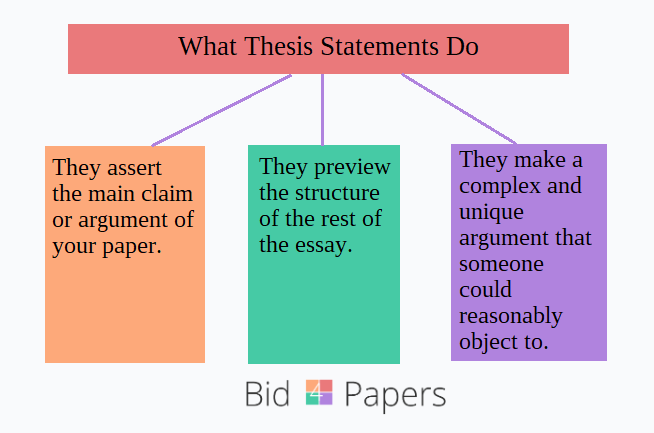
Hint: When making a claim, answer the question, “What point am I trying to make?” If still in doubt, introduce your idea and evidence to a thesis statement generator : it will craft a thesis draft that you’ll modify later (if needed) to reflect your position better.
Step 4: Write a Critical Essay Outline
You can’t write an essay without outlining. At least, it will help you save time : here you’ll structurize all the points into paragraphs so it would be easier to write them later.
At this stage, you’ll have arguments and evidence to evaluate in essay paragraphs. Decide on the evidence that would support your thesis statement best.
Step 5: Write a Draft
Once the essay outline is ready, it’s time to write. (Yeap, finally!) Begin with an examination (a summary) of the work and respond to its central claim. Then, analyze and evaluate it with the evidence. And finally, conclude your critical essay with the emphasis on its most essential insights.
While writing, remember about academic style: stay formal and objective; use language precisely; remember about references; use transition words in paragraphs to guide readers and help them follow your train of thoughts.
Step 6: Edit and Improve
The best advice here would be to hold your completed draft for a short while and get some rest from writing. Then, read your essay a few times to see all the mistakes. You may do it yourself or ask a friend, a mom, or a groupmate to help you: they’ll see your essay from a different perspective, as readers, so it will be easier for them to identify weak points to edit.
Revise your essay, making all the necessary amendments until you see it’s perfect. To make sure it’s genuinely so, don’t hesitate to ask writing service for professional help .

Creating a critical essay plan
To write critical essay correctly, you will need a work plan. This will make it possible not to be confused by your information and to do the work consistently. More often than not, only three basic steps will suffice:
- The first thing to do is to write an introduction that will allow the topic to be disclosed, give the first argument, and strengthen the thesis.
- Next, you must create the central part, consisting of at least three full paragraphs. Consistently give arguments, facts, figures, and comparisons.
- Conclude with a proper conclusion. You can rephrase the thesis statement to make a circle between the end and the beginning of your paper.
Now you know how to write a critical essay introduction and can get started efficiently.
Tips for Writing a Critical Essay
Writing a critical essay is about your thinking skills. It’s an analysis- and argument-building process, and you need to practice a lot to develop essential skills of thinking. These tips will help you start and write academic papers that work, no matter if that’s a SAT essay , a dialectic essay , or any other type of college writing.
- Practice smart reading. It’s when you read a text, identifying and analyzing its specific details: an author’s claims, how he or she presents those claims, controversies surrounding the message, its strengths and weaknesses, its overall value, etc.
- Read some examples of critical essays. It will help to understand their structure and writing style. But don’t copy others’ ideas, trying to sound smarter! Develop your writing style, use the words you know, and introduce your ideas.
- Start writing a critical essay in advance. Don’t wait until the last moment: you’ll need time to read and evaluate the source, find evidence, introduce your thesis, write, and edit your essay. The more time you have, the better.
- Remember to introduce the author and the work you’re going to evaluate in your essay.
- Avoid the “I think” or “in my opinion” stuff when writing. You need to focus on the work, not yourself. When expressing your opinion, do it third-person and back it up with evidence.
- Always document quotes, paraphrases, and other references you use in essays.
- Resist the temptation of summarizing the source in general. If you start writing lengthy descriptions of all characters and the plot, stop and double-check if this information helps your analysis. Critical essays are about interpretation and evaluation, not retelling the plot.
Useful techniques used in writing a critical essay
Writing critical analysis essays can help you with a few useful tricks that even experts use during their work:
- you need to create a clear thesis statement to follow throughout the paper;
- work properly with textual evidence. Don’t leave only quotes in the paragraph and give clear examples;
- try to break paragraphs in time to create the right pauses for readers and to move from description to critique.
By doing so, your chances of succeeding in your assignment will return several times over!
Critical Essay Structure
Most essay types have a standard structure that includes an introduction (with a thesis statement), a body (paragraphs with arguments and evidence to support the thesis), and a conclusion (with a thesis restatement and essential insights). A critical essay structure is not an exception here.
But before you start writing, craft an outline, aka a roadmap for your essay to make sure you won’t miss any critical detail while writing a draft.
Critical Essay Outline
When you have an essay plan, its writing becomes much easier. Consider the format: as a rule, critical essays have a standard structure that consists of an introductory paragraph, a few body paragraphs, and a conclusion. Use this template that will help you write a detailed outline for your critical essay :
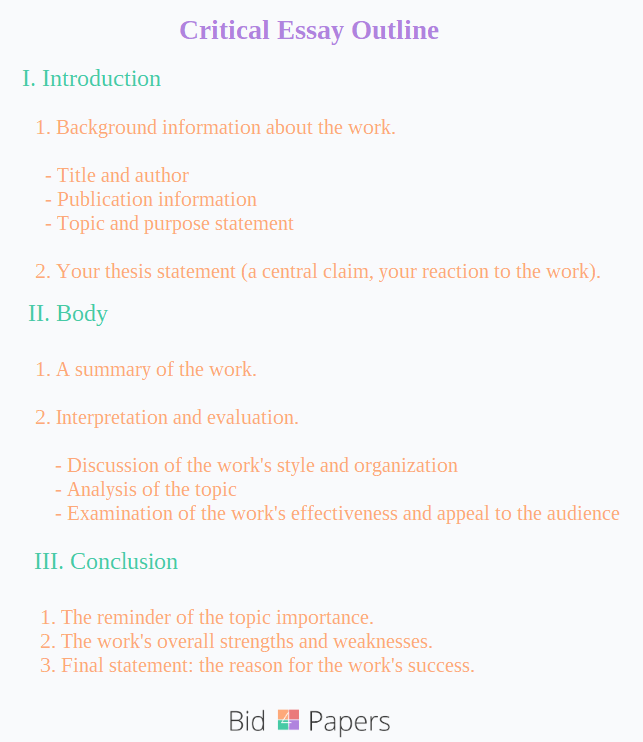
Once you’ve completed the critical essay outline, it’s time to start writing. Do it quickly (you will have time to proofread and edit it later), paying attention to all the details from your outline.

Critical Essay Introduction
All essays have introductions, as it’s a part where you hook readers , tell about the topic and its importance, and, therefore, persuade them to continue reading. But while the purpose of most introductions is to introduce the thesis, a critical essay introduction is more complicated.
Here’s how to write a critical essay introduction:
- First, you need to introduce the author and the title of the work.
- Second, you need to state the author’s main point (of the entire work or the section you’re going to evaluate in your critical essay). Answer the question, “What does the author want readers to remember?”
- Third, you need to state (1-2 sentences) your evaluation of the work. (It will be your thesis statement.)
- And finally, add any background information the reader might need to understand the work’s context (its overall topic, the controversy it might involve, etc.). While it’s not a narrative essay , you need to set the stage: the chances are, your audience didn’t read the work so they wouldn’t understand your essay without the provided background.
Critical Essay Body
It’s the most detailed part of your critical essay, and it involves several sections. Each section addresses a particular detail and evidence to support your thesis.
The first section is the work’s summary.
Write a short, objective, and unbiased report of the work (or its abstract) you’re evaluating in your critical essay. Here you need to tell about the author’s overall point and the main supports he or she offers for that point. Make sure to avoid your personal opinion: write a summary in the third person!
The second section is the work’s interpretation and evaluation.
It’s where your report ends, but your analysis starts. Here you’ll evaluate the work’s strong and weak parts, by the following criteria:
- How accurate is the information in the work you’re criticizing?
- Does it have or lack definitions and key terms?
- Are there any controversies or hidden assumptions?
- Is the author’s language clear?
- Is the author fair? Does he or she cover both sides of the issue, without any bias?
- Is the work’s organization logical? Does the author present all the points in a meaningful way?
- Are there any gaps in his or her arguments?
- What are (if any) the author’s fallacies? (Too emotional language, over-simplification, generalization, etc.)
After that, your interpretation comes. It’s not about judging (evaluation) anymore, but your response (opinion) on this work.
Ask yourself:
- Where do I agree or disagree with the author?
- What does he or she get right or wrong?
- Would I recommend this work as a credible research source?
Your interpretation is, actually, the thesis of your essay. In this section, you’ll support the opinion you expressed in the thesis.
Critical Essay Conclusion
Yes, finally! Here comes the time to write a critical essay conclusion, and it doesn’t have to be too long. It’s like a reworded introduction, where you repeat the importance of your topic, reiterate the points you discussed, and summarize your interpretation.
- Remind readers why this topic is essential.
- Combine your evaluation and interpretation to focus on the work’s overall strengths and weaknesses.
- State what makes the work so popular and successful.
Topics for writing a critical essay
A properly assembled structure of a critical essay will allow you to work with almost any topic without any problems. However, choosing it can take a while, so here are some cool examples to help you start proactively.
Choose the topic closest to you and begin to study it in depth. This will allow you to accumulate the right argument and use it competently and quickly. Don’t forget to learn how to structure a critical essay and get to writing!
Critical Essay Examples
With tons of resources available online today, it’s not that difficult to find critical essay examples. But it’s challenging to find good ones . Here we have a couple of essay abstracts for you to get an idea of what a critical essay looks and sounds. Feel free to use them for informational and educational purposes only; don’t copy them word by word in your essays to avoid duplications and accusations of plagiarism from your educators.
Critical essay example #1 (the abstract, taken from examples.com):
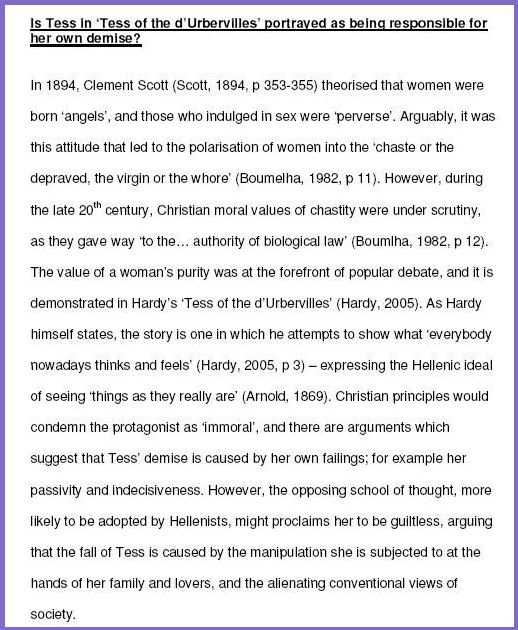
Critical essay example #2 (the abstract, taken from examples.com):
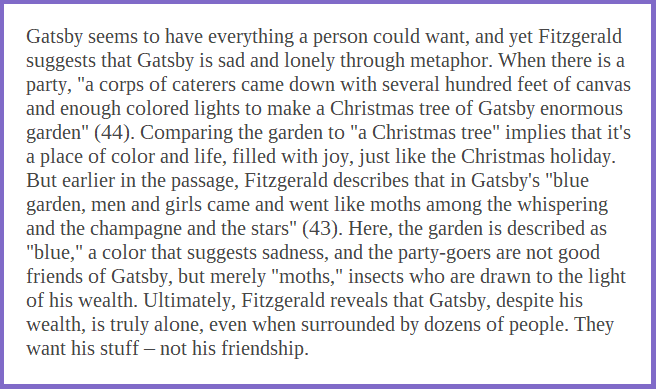
More examples and explanations:
- The University of Queensland: Critical reading and analysis
- Thompson Rivers University: Critical analysis template
- Nova Southeastern University : Critical essay
FAQ about Critical Essay
And now, for the most interesting part:
To make a long story short for you, here go answers to the most frequently asked questions about critical essay writing. Read them if you want your analytical essay to be A-worthy.
- What type of language should be used in a critical analysis essay?
Make sure to use a formal language in critical essays. It’s about grammatical and pronunciation norms used in intellectual and academic activities. And since your essay is analytical and requires credibility, a formal language is what you need to make it sound so.
- How to cite a critical essay?
For citing critical essays, use the MLA format. Name the author first, followed by the title. Then, specify the publication details, including the pages from where you take the quote or reference.
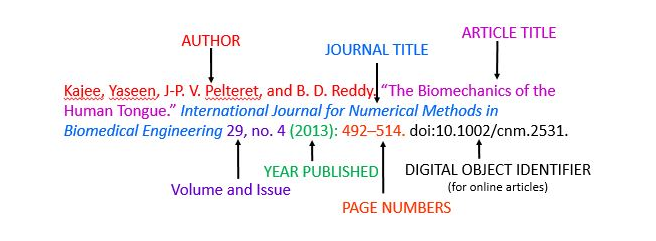
- How to write a critical essay on movies?
Do it in the same ways as with books or articles. Watch the movie several times, engage with it critically: identify its core focus and message, interpret and evaluate it in the essay, and come up with the essential insights this movie gives to the audience.
- How to write a self-critical essay?
Self-critical essays are about analyzing and evaluating your own writings. As a rule, educators assign them for you to reflect on your progress as a writer.
Such essays are not that difficult to craft. Follow the basic structure of a critical essay: write an introduction stating your thesis, a few body paragraphs analyzing your strengths and weaknesses as a writer, and a conclusion that restates your thesis and sums up what you’ve learned about yourself.
- Can a critical essay be in the first person?
Yes, if you write a self-critical essay. But if you write about others’ works, use the third person only.
In a Word…
Don’t be afraid of writing a critical essay! Yes, essays are many, and it might seem impossible to learn the differences between them and the rules of writing them. But their basic structure is the same. All you need to do is identify the purpose of your assigned work and outline it accordingly.
Critical essays are about analyzing and evaluating the work of other writers. So, just read it, figure out what the authors wanted to say, think of whether you agree or disagree with them, and write a critical essay about all this stuff. Therefore, you develop critical thinking. You learn to introduce and prove your arguments.
And you understand how to share ideas with others so they’d listen and support you.
Related posts
- Harvard Referencing Style: A Comprehensive Guide
- What Is the Difference between Primary and Secondary Sources
- Common Types of Plagiarism with Examples
Our Writing Guides

How to Write a Critical Essay: A Step-by-Step Guide
- July 14, 2024
Dr. Marvin L. Smith
A critical essay is an analytical piece of writing that evaluates a text, idea, or work of art. It requires careful examination of the subject matter, presenting a balanced argument supported by evidence.
This guide will walk you through the essential steps to craft a compelling critical essay, from understanding the prompt to formulating a strong thesis and structuring your analysis effectively.
By mastering these techniques, you’ll enhance your ability to analyze and articulate complex ideas in academic writing critically.
Table of Contents
What is a critical essay?
A critical essay is an analytical piece of writing that evaluates, interprets, and critiques a specific topic, work, or idea. Unlike other essay types that primarily focus on summarizing or describing, a critical essay requires the writer to engage deeply with the subject, examining its strengths, weaknesses, and implications.
In a critical essay, the author presents a central claim or argument about the topic and supports it with evidence and reasoned analysis. This type of essay goes beyond surface-level observations to explore underlying meanings, contexts, and significance. It often involves questioning assumptions, considering alternative viewpoints, and drawing connections between the subject and broader themes or issues.
The goal of a critical essay is not merely to criticize, but to offer a balanced, thoughtful evaluation that demonstrates the writer’s ability to think critically and communicate complex ideas effectively. Whether analyzing literature, art, scientific theories, or societal issues, a critical essay aims to deepen understanding and provoke thought about its subject matter.
Characteristics of a critical essay
A well-crafted critical essay exhibits several key characteristics that distinguish it from other forms of academic writing:
Central Claim:
At the heart of every critical essay lies a central claim or thesis statement. This is the writer’s main argument or interpretation of the subject under examination. The central claim should be:
- Clear and specific, stating the essay’s primary focus
- Debatable, offering a perspective that can be supported and potentially challenged
- Relevant to the topic and appropriate for the essay’s scope
To support the central claim, a critical essay relies heavily on evidence. This evidence can take various forms:
- Textual evidence from primary sources (e.g., quotes from a literary work being analyzed)
- Data from scientific studies or historical documents
- Expert opinions or scholarly interpretations
- Logical reasoning and analysis
The evidence presented should be:
- Relevant to the central claim
- Credible and reliable sources
- Thoroughly analyzed and interpreted, not merely stated
Conclusion:
The conclusion of a critical essay serves to synthesize the argument and reinforce the central claim.
An effective conclusion:
- Restates the thesis in light of the evidence presented
- Summarizes the main points of the analysis
- Offers broader implications or significance of the argument
- May suggest areas for further study or consideration
Additional characteristics of a critical essay include:
Objective Tone: While presenting an argument, the essay maintains a balanced and academic tone, avoiding emotional language or personal bias.
Analytical Approach: The essay breaks down complex ideas into component parts for detailed examination.
Contextual Consideration: It places the subject within its broader historical, cultural, or theoretical context.
Structured Argument: The essay follows a logical structure, with each paragraph building upon the previous one to create a cohesive argument.
Ready to transform your writing experience?
Sign up for Blainy today and start writing your papers with confidence!
Steps to write a critical essay
Here are the steps to write a critical essay. By following these guidelines, you’ll be able to craft a well-structured, insightful analysis of your chosen subject. Remember, the key to a successful critical essay lies in your ability to engage deeply with the material and present a clear, well-supported argument.
Critical Reading
The foundation of a strong critical essay is a thorough, engaged reading of the subject material. As you read, actively interact with the text by taking detailed notes and highlighting key points. Pay close attention to the author’s main arguments and the evidence they use to support these claims.
Look beyond the surface level of the text. Consider the context in which the work was created, including historical, cultural, or social factors that might have influenced its creation. This contextual understanding can provide valuable insights for your analysis.
Question the assumptions presented in the text and be alert for potential biases. Critical reading involves not just understanding what is said, but also examining how and why it is said. This deep engagement with the material will provide the raw material for your analysis and interpretation.
Organize Your Thoughts
After your critical reading, take time to process and structure your ideas. Review your notes, looking for recurring themes or patterns that emerge from the text. Group related ideas together to start forming the basis of your argument.
Consider different perspectives on the subject. Are there alternative interpretations or conflicting viewpoints? Exploring these can help you develop a more nuanced understanding of the topic and strengthen your argument.
As you organize your thoughts, you’ll likely begin to formulate your own stance or interpretation. This is the seed from which your thesis will grow. Don’t rush this process – allow yourself time to think through the material and your response to it.
State Your Thesis
With your thoughts organized, you can now craft your thesis statement. This concise statement should encapsulate the main argument or interpretation you’ll present in your essay. Ensure your thesis is specific and debatable – it should present a clear position that you’ll defend throughout your essay.
Your thesis should be relevant to the subject and appropriate for the scope of your essay. It’s not just a statement of fact, but a claim that requires support and evidence to prove. A strong thesis will guide the rest of your writing process, helping you maintain focus and coherence throughout your essay.
Write a Critical Essay Outline
Before you begin writing, create a structured outline for your essay. This plan will help you develop a logical flow of ideas from your introduction through to your conclusion. Decide on the main points you’ll address in each body paragraph, ensuring they all support and develop your thesis.
Note the evidence and examples you’ll use to support each point. This might include quotes from the text, data from studies, or insights from scholarly sources. Having this information organized in your outline will make the writing process much smoother.
Consider how you’ll transition between paragraphs to maintain the flow of your argument. A well-crafted outline serves as a roadmap for your essay, ensuring your ideas are presented in a clear, logical manner.
Write a Draft
With your outline as a guide, begin writing your first draft. Start with an engaging introduction that presents your thesis and provides context for your argument. In your body paragraphs, develop each main point, supporting it with evidence from your critical reading and analysis.
Ensure each paragraph focuses on a single main idea that supports your overall thesis. Use transitions to create smooth connections between paragraphs, maintaining the flow of your argument throughout the essay.
Conclude your essay by reinforcing your thesis and summarizing your key points. Consider discussing the broader implications of your argument or suggesting areas for further study.
Proofread & Edit
The final step in crafting your critical essay is careful revision. Read through your draft, checking for clarity and coherence in your arguments. Ensure all evidence is properly cited and integrated smoothly into your text.
Look for grammatical errors and areas where you can improve sentence structure or word choice. Consider reading your essay aloud – this can help you catch awkward phrasing or unclear ideas.
If possible, seek feedback from peers or instructors. Fresh perspectives can provide valuable insights and help you refine your essay further. Remember, good writing often comes through multiple revisions, so don’t be afraid to make significant changes if they strengthen your argument.
Tips for writing a critical essay
Here are the tips to craft a perfect critical essay.
Develop a Strong Thesis Statement
Your thesis is the cornerstone of your critical essay. Ensure it clearly states your main argument and provides a roadmap for your analysis. A strong thesis should be specific, debatable, and supported by evidence from the text or subject you’re analyzing.
Engage in Close Reading
Pay attention to details in the text or subject you’re critiquing. Look for patterns, themes, and contradictions. Close reading allows you to uncover nuances that might not be apparent at first glance, providing rich material for your analysis.
Use Evidence Effectively
Support your arguments with relevant evidence from the text or other credible sources. When quoting or paraphrasing , always explain how the evidence supports your point. This demonstrates your ability to interpret information critically.
Maintain Objectivity
While you’re presenting your own interpretation, strive to remain objective. Acknowledge opposing viewpoints and address potential counterarguments. This shows that you’ve considered the topic from multiple angles, strengthening your overall analysis.
Structure Your Essay Logically
Organize your ideas in a clear, logical manner. Each paragraph should focus on a single main point that supports your thesis. Use transitions to create smooth connections between paragraphs, ensuring your essay flows coherently from start to finish.
Avoid Summarizing
Remember, a critical essay is not a summary. While you may need to provide some context, your focus should be on analysis and interpretation. Dig deeper into the meaning and implications of the subject rather than simply restating what it says or shows.
Critical essay structure
A well-structured critical essay typically follows a standard format that helps organize your thoughts and arguments effectively. Here’s an overview of the key components:
Introduction:
Begin with a hook to capture the reader’s attention. This could be a provocative question, a surprising fact, or a relevant anecdote related to your topic. Provide brief background information to contextualize your analysis. End your introduction with a clear, concise thesis statement that outlines your main argument.
Body Paragraphs:
Each body paragraph should focus on a single main idea that supports your thesis. Start with a topic sentence that introduces the paragraph’s central point. Present evidence from the text or other sources to support your argument. Analyze this evidence, explaining how it relates to your thesis and what insights it provides. Use transitions between paragraphs to maintain a logical flow of ideas.
Counterarguments:
Acknowledge opposing viewpoints or potential criticisms of your argument. This demonstrates a comprehensive understanding of the topic and strengthens your position. Address these counterarguments and explain why your interpretation is more convincing or valid.
Summarize your main points without simply restating them. Reinforce your thesis by showing how your analysis supports it. End with a broader statement about the significance of your argument or its implications for understanding the subject matter.
Topics for writing a critical essay
Sample topics for writing a critical essay:
- The Impact of Social Media on Modern Communication
- Climate Change Denial: A Critical Analysis
- Gender Representation in Contemporary Cinema
- The Ethics of Artificial Intelligence in Healthcare
- The Role of Protest in Democratic Societies
- Fast Fashion and Its Environmental Consequences
- The Influence of Video Games on Youth Culture
- Fake News and Its Effect on Public Opinion
- The Portrayal of Mental Health in Literature
- The Pros and Cons of Genetic Engineering
Critical essay examples
Here is an example critical essay.
Title: The Portrayal of Gender Roles in Shakespeare’s “Macbeth”
William Shakespeare’s tragedy “Macbeth” has long been celebrated for its exploration of ambition and morality. However, a closer examination reveals a complex portrayal of gender roles that both reflects and challenges the societal norms of Elizabethan England. This essay argues that Shakespeare uses the characters of Macbeth and Lady Macbeth to subvert traditional gender expectations, ultimately highlighting the destructive nature of rigid gender roles.
Body Paragraph 1:
At the outset of the play, Lady Macbeth embodies traditionally masculine traits, displaying ambition, ruthlessness, and a willingness to challenge the natural order. She famously implores the spirits to “unsex” her, wishing to strip away her feminine qualities to achieve her goals. This portrayal challenges the Elizabethan notion of women as passive and subservient, instead presenting a female character who drives the plot forward through her own agency and ambition.
Body Paragraph 2:
Conversely, Macbeth initially exhibits traits associated with femininity in Elizabethan society, such as indecisiveness and emotional vulnerability. His reluctance to act on his ambitions and his reliance on his wife’s guidance subvert the expected behavior of a male warrior. Shakespeare thus presents a male protagonist who doesn’t conform to the period’s ideals of masculinity, challenging the audience’s expectations.
Body Paragraph 3:
As the play progresses, both characters undergo transformations that further complicate gender expectations. Lady Macbeth’s eventual descent into madness and guilt can be interpreted as a reassertion of her “feminine” nature, suggesting that her rejection of traditional gender roles leads to her downfall. Meanwhile, Macbeth grows increasingly ruthless and violent, embracing a hyper-masculine persona that ultimately leads to his destruction.
Counterargument:
Some critics argue that the play ultimately reinforces traditional gender roles by punishing characters who transgress them. However, this interpretation overlooks the nuanced way in which Shakespeare presents these characters’ downfalls. Their tragic ends stem not from their rejection of gender norms per se, but from the moral corruption that accompanies their pursuit of power.
Through his portrayal of Macbeth and Lady Macbeth, Shakespeare offers a critique of rigid gender roles in Elizabethan society. By presenting characters who both embody and subvert gender expectations, he illustrates the destructive potential of adhering too strictly to societal norms. This nuanced exploration of gender continues to resonate with modern audiences, highlighting the timeless nature of Shakespeare’s insights into human behavior and social constructs.
Final thoughts
Mastering the art of critical essay writing is a journey of intellectual growth. It sharpens your analytical skills, enhances your ability to construct compelling arguments, and deepens your understanding of complex topics. As you practice, you’ll find that these skills extend far beyond academic writing, enriching your critical thinking in various aspects of life.
About the Author:
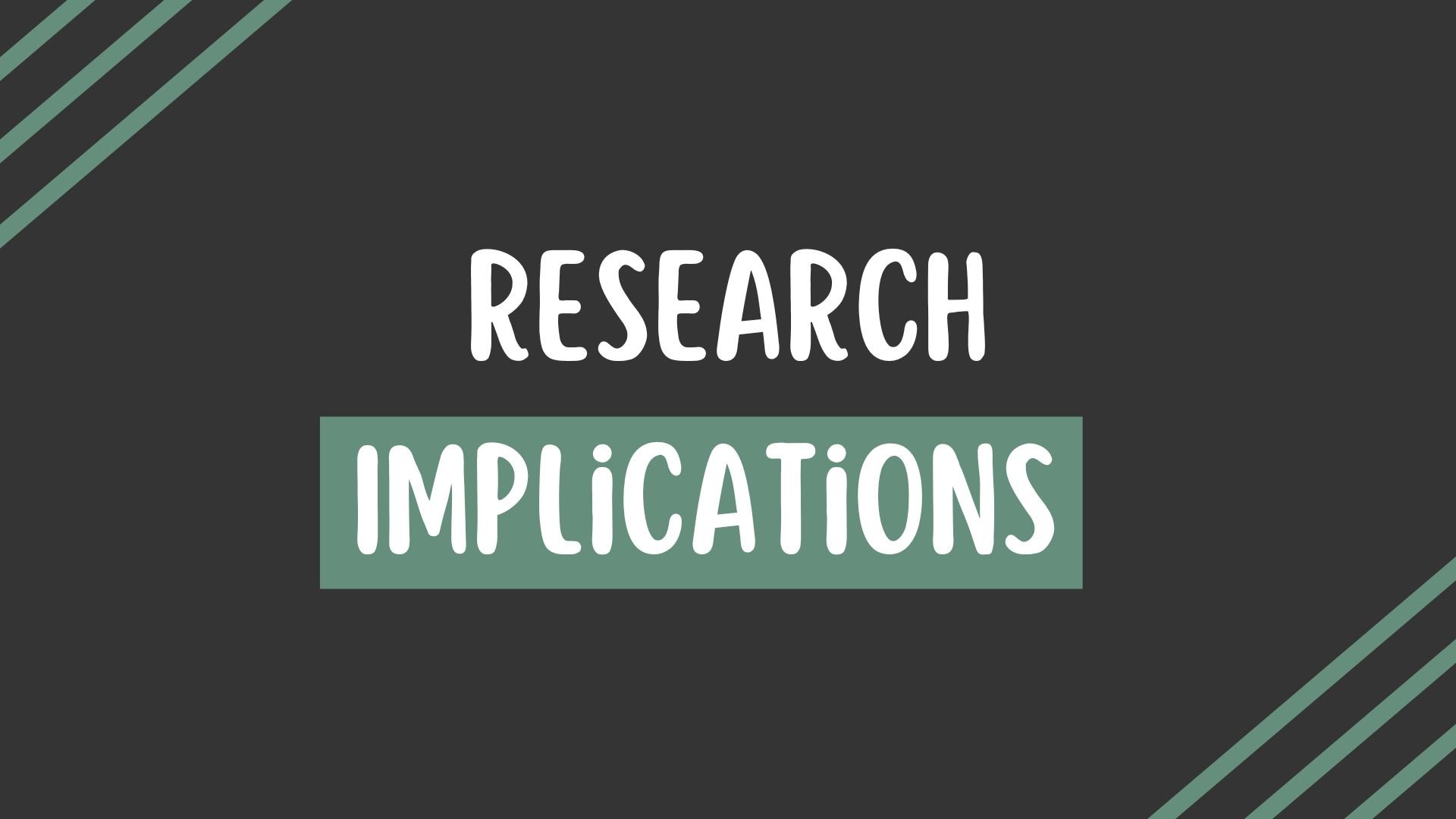
Research Implications 101: A Beginner’s Guide to Writing for Impact
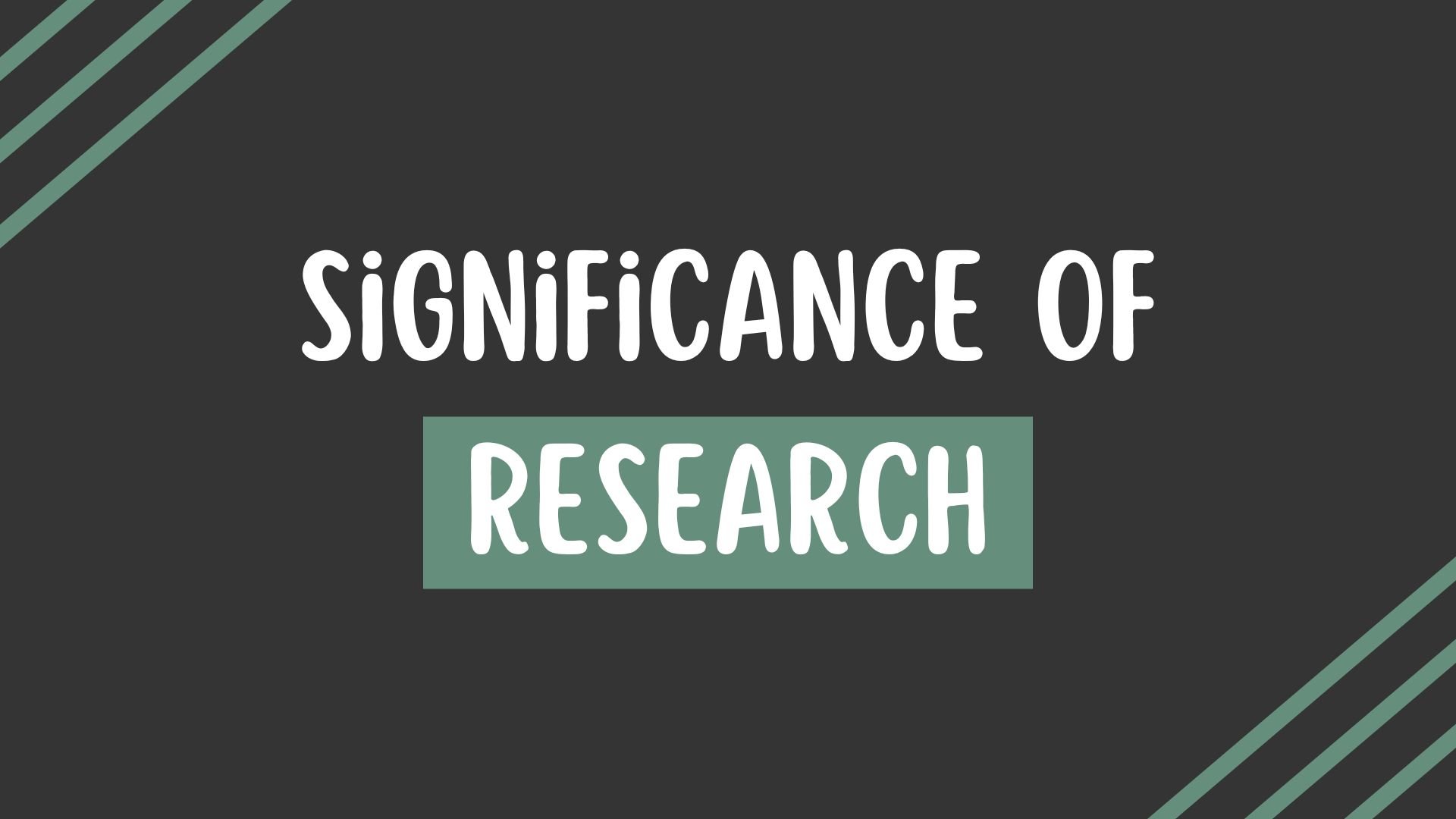
The Significance of Research: Why It Matters
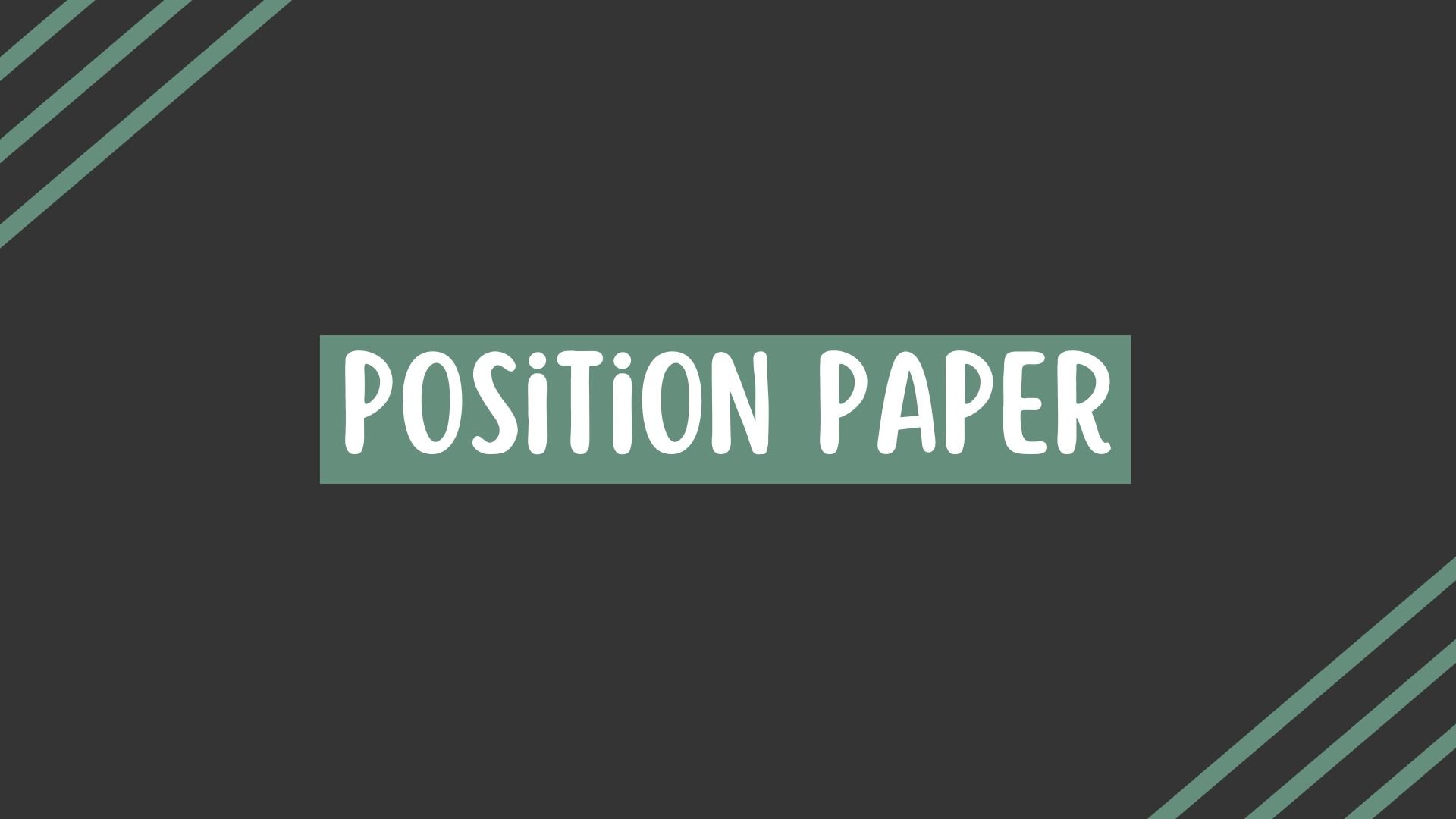
What is a Position Paper? Definition, Purpose & Examples
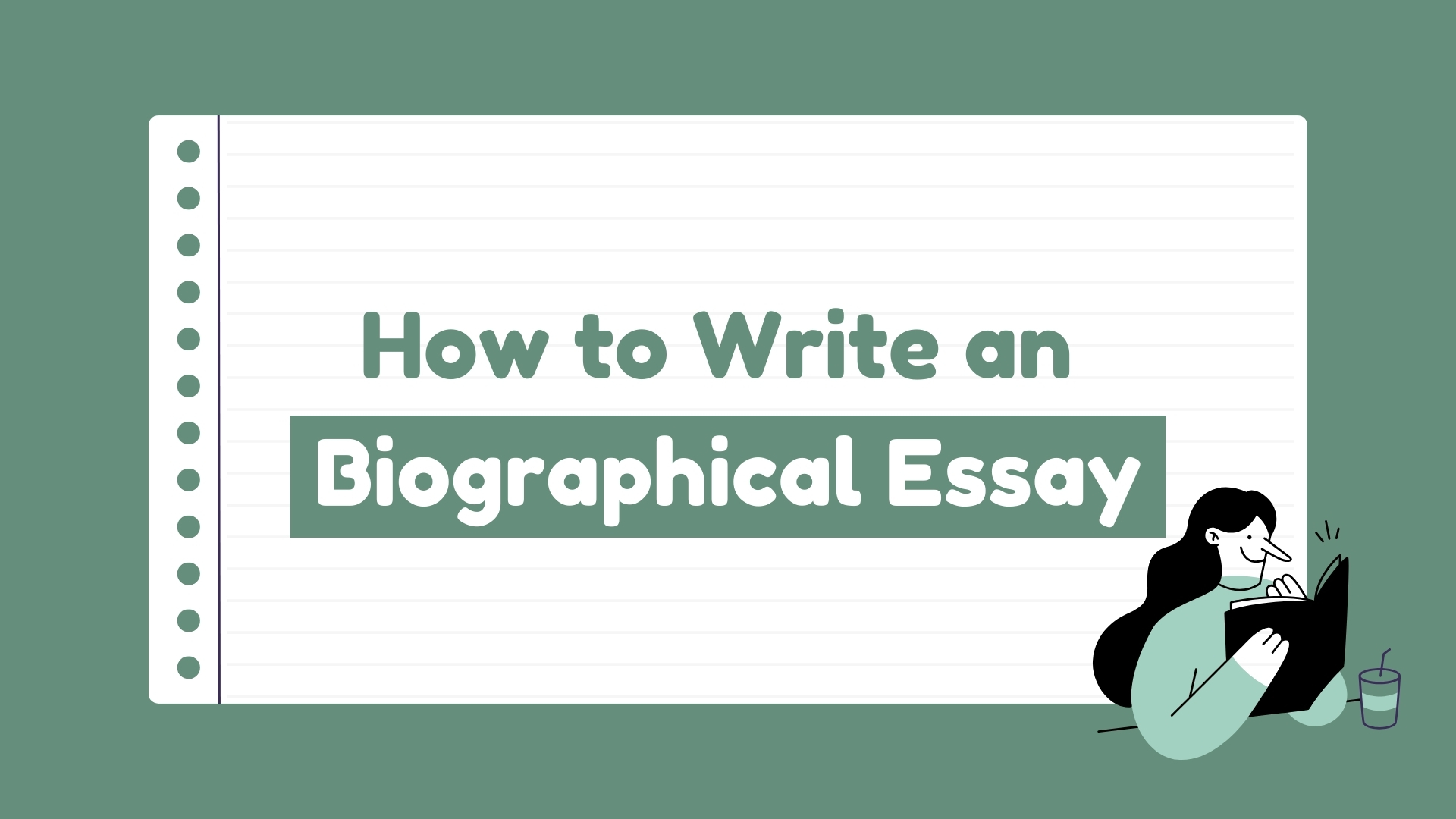
How to Write a Biographical Essay?
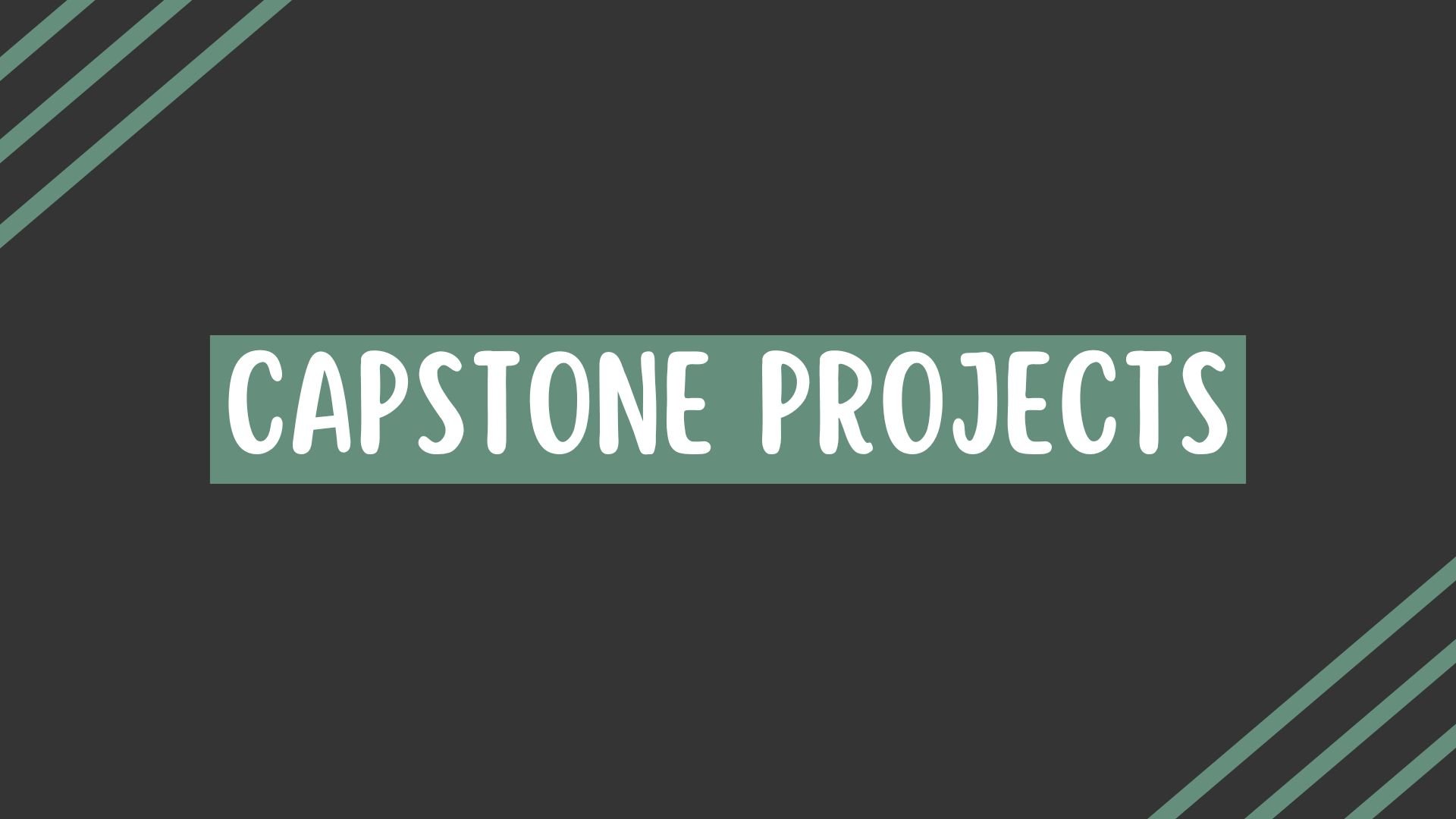
Capstone Projects 101: Definition, Purpose, and More
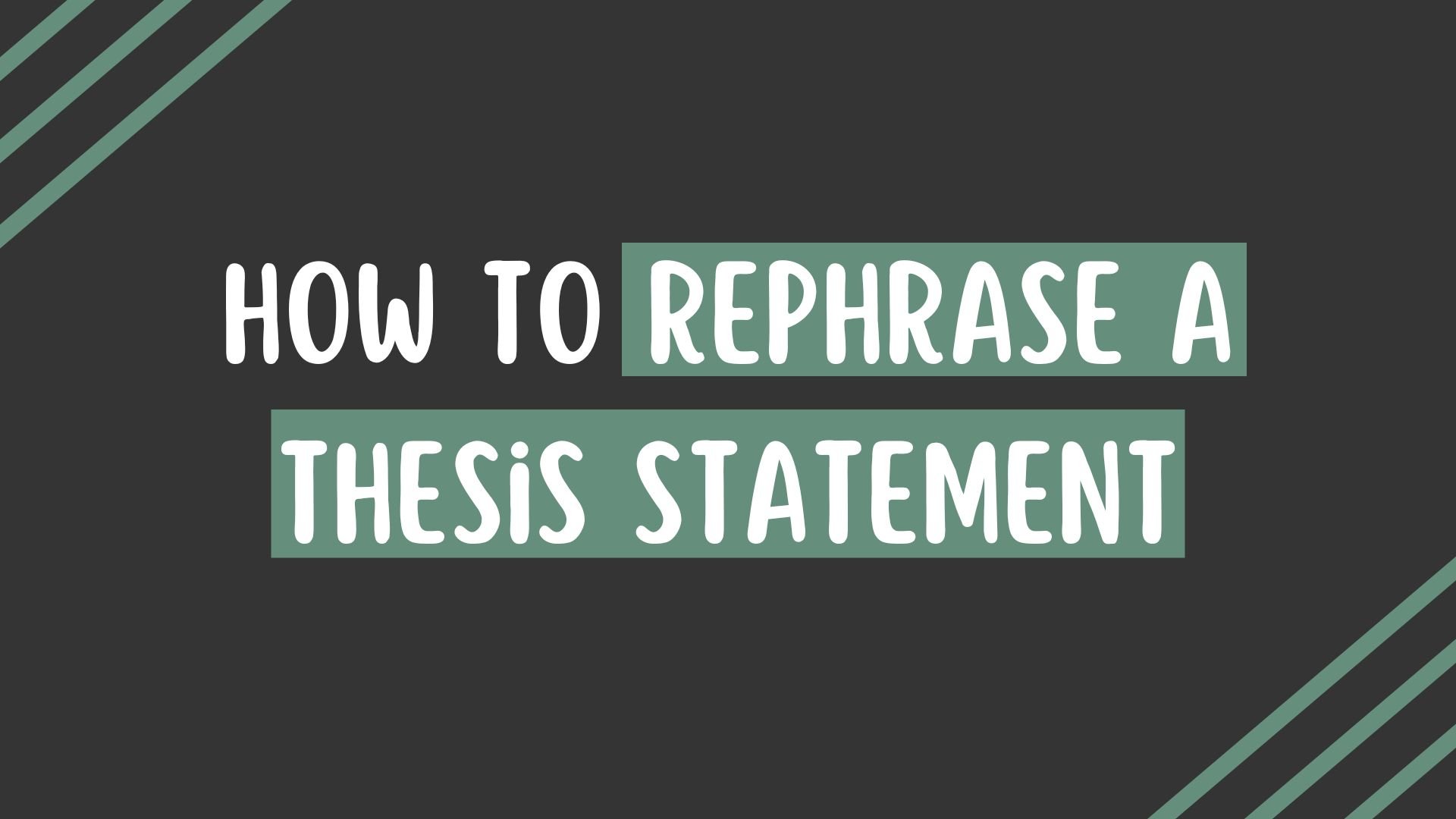
How to Rephrase a Thesis Statement in 4 Easy Steps

Unlock effortless writing excellence with the world's #1 AI-powered essay and research paper writer. Experience instant research paper perfection and elevate your writing to the next level.
Limited time offers 🎁🎉.
Black Friday Sale
Cyber Monday Sale
Discover More
50+ Free AI Tools
Terms & Condition
Privacy Policy
✉ [email protected]
✆ +971 50 760 0820
📍190 Hackett Inlet, Eastern Region, Dubai, UAE.
Copyright © 2024 Blainy
Critical Essay: The Complete Guide. Essay Topics, Examples and Outlines
Whether you specialize in literature or just write an essay for a class, knowing how to write a critical essay will give you an advantage throughout your studies at a university and in your professional career. Writing critical essays allows you to develop critical thinking skills, including attentive reading, technical analysis, academic writing skills, searching for reference books, and editing. Mastering these skills will help you conduct a scientific conversation and allow you to communicate and think more productively.
What is a Critical Essay?
A critical essay is an analysis of any piece of text. It can be a book, a movie, an article or even a painting. The main point of this type of an essay is to interpret text or position it in a wider context. For instance, if you write a critical analysis of a book, you may analyze the tone of its text and find out how it influences the overall meaning of the book. If you analyze a movie, you might concentrate on a symbol that you see over and over again. Nevertheless, you have to include an argumentative thesis about the text and have a lot of evidence sources, obviously textual, to support your statements.
How to write a Critical Essay? Step-by-Step Guide
- Find out the topic as early as possible to plan your research.
- Find the information you need in a wide variety of sources, including journal articles, books, encyclopedias, and news. Gather more information than you plan to actually refer to when writing a paper, but do not collect too much, it can distract you from the main thing, and you will eventually include it in your essay simply because you found it. Do not use Wikipedia and do not copy other people’s comments; no matter from which website you take them, plagiarism will be discovered.
- Look through your sources to separate interesting information from irrelevant material. Interesting research can be found in books, literary guides, in published critical articles on your particular topic. And vice versa, do not investigate things that do not relate to your topic, what I mean is, do not engage in the study of witches, if the topic of your paper is a monarchy.
- Carefully reread the relevant materials and evaluate them critically. Highlight, underline or otherwise mark the necessary information in your personal articles and books. Use colored stickers to draw your attention to important details in library books. Make a brief summary of each source after reading it. Pay attention to important details and highlight the main point of view for further use.
- Formulate the thesis by reviewing your notes and research. You can write a more general thesis or ask an important question that your paper will answer.
- Write a preliminary introduction, knowing that you can edit or even rewrite it later.
- Develop an approximate plan based on your notes and studies.
Identify two or three main sections of the body of your essay. These sections should consist of your most important arguments. Use your notes and research to fill these sections with details. You can copy and paste the most important details or arguments into your plan.
- Identify the relationships between sections of your essay and briefly describe them on the margins of your plan.
- Use this connection to write an approximate conclusion.
- Set your paper aside for a few days before rereading the draft.
- Leave enough time to make a thorough review of all material that will clarify any illogical reasonings or arguments.
- Complete your essay by carefully checking the final version of the printed version. Use your imagination and make the introduction interesting for readers. Write a clear thesis statement and use up-to-date sources, with a lot of useful information.

Finished papers
Customer reviews

Critical Essay Outline
Writing a good critical essay requires a deep analysis of a given topic, and the ability to form clear arguments in order to draw meaningful conclusions. It is important to be aware of the various elements that must be taken into consideration when ordering an essay in order to produce a well-structured, balanced and compelling piece of work. Doing so will help you understand the material better, think more critically, and come up with a more insightful analysis of the topic. Additionally, it will also help you to identify any gaps in the existing literature that can be addressed in your own research.
As with any other essay, the critical analysis consists of the introduction, body, and conclusion. The outline that you will see below is just a sample for you to understand what it can look like. Once you are comfortable, you are free to change it, add more details or arrange it differently to make it more effective. If you are really unsure what your essay is supposed to look like, you can also contact your teacher.
INTRODUCTION
The introduction has three main functions. First of all, you have to introduce the reader to the topic of your paper, what are you going to analyze here but briefly? Then, describe how are you going to address the topic of your paper. And finally, grab the reader’s attention, make them want to stay here, and read the rest of your paper.
BODY PARAGRAPHS
This is going to be the largest part of your essay. Here you have to write about something you said you are going to write about in the intro. In other words, support your thesis statement. You have to make a General Statement, then add some quotes to expand it or prove it. After that you have to explain how the quote relates to the thesis, here you have to ask yourself “so how does it relate to my thesis”. And do not forget about Transitions which are connecting paragraphs.
To write a paper in a relevant way, students need to add new information to their research and assess the significance of each argument. Critical essays are meant to be insightful and thought-provoking, so they should provide enough evidence and analysis to support the argument and connect it to the thesis statement. Moreover, students should pay attention to the structure of the essay and make sure they write a paper that is logically organized and easy to understand.
In other words, the conclusion is restating of your thesis. If you have written a strong and clear introduction, the conclusion will not be a problem at all.
So, you have to Restate your Thesis. But do not just repeat what you said before, put it differently. Basically, you said that you are about to prove to us something and now you have to show us that you did. And make a good ending. Make it memorable. Your reader has to have a feeling that the point has been proven.
Introduction
- Attention-catcher
- Briefly say what you are going to talk about
- Thesis statement
Body paragraphs
- Topic Sentence (piece of evidence that supports your opinion)
- Supporting Evidence and Details
- Concluding Sentence/Transition
- Restate the thesis statement in different words
- Summarize the main key pieces of evidence
- Final closing sentence
Critical Essay Topics
Good critical essay topics.
- Describe the way irony was used in your favorite classical book
- Feminist ideologies in a piece of literature
- Analyse how the background of the author affects his writing.
- Describe the secondary characters in your favorite book
- What makes a good and captivating drama series?
- Choose a movie/series that recently won a best picture award
- Provide one alternative to anti-poverty programs today and discuss
- What are the problems of eating healthy? Discuss
- What are the economic benefits of recycling? Discuss what makes it effective in your context
- Discuss how historical figures is portrayed in movies
Critical Essay Tips
- Try to start in advance, if possible. You will write a better essay and will not experience stress if you start writing earlier than the last night.
- Finish the draft a few days earlier to leave time for checking it.
- Ask a friend or a family member to check and comment on your essay. Professional writers write a few drafts of their work, and you, most likely, will have to do the same.
- Work according to your own needs. For example, some people need a plan, while others believe that a formal plan kills inspiration. Find out what is best for you, and act accordingly.
- Write in your own style. It is better to correctly use words that you know, than abuse words that you do not know, in an attempt to sound smarter.
- Make sure that the quotes are given as accurately as possible, including inverted commas, statistics, and theoretical concepts. If in doubt, it’s better to be wrong in quoting than to be accused of not being able to conduct your research, which can lead to accusations of plagiarism.
- Essays written at the last minute, suffer from a lack of logic and poor grammar. Remember that your teacher has read hundreds, if not thousands of student papers, and can easily understand that you wrote an essay at the last minute.
I know that you might still be lost in all these long explanations but bear with me. Here are some useful links you might like to review at Edusson :
- Essay Topic Generator. Do not know how to name your essay? Then this link is just for you. Everything is simple, enter the keywords for your essay and select the category and you’ve got yourself a great title.
- Essay Examples . I know that sometimes you just can’t start writing until you see how it is all supposed to look like. So, here you go – essay examples. Be sure not to rewrite the content, though.
- Essay Checker . One of the most important parts of writing an essay is checking it once it’s done. You might write a great essay in terms of content, but if you have grammar mistakes or your answers are not relating to the questions, say goodbye to your good grade.
- Essay Editing Service . Just to make sure you have not missed anything, use this service. Let a professional do their work.
Writing a good definition essay can be a challenging task. Students often need to pay for papers to be written for such assignments, and it is not always easy to find a reliable source for them. Fortunately, Edusson can provide quality papers and ensure that students get the best results. By using this custom essay writing service, students can be sure that their papers will meet the requirements of their professor and be of the highest quality.
So, that is it. I hope your skills will get even better now. Good luck!
Related posts:
- Narrative Essay: Useful Guidelines for Writing
- Research Paper Writing Help Guide
- How to Write a Critical Thinking Essay: Effective Tips
- How to Structure and Write an Effective Critique Paper
Improve your writing with our guides

How to Write a Scholarship Essay

Definition Essay: The Complete Guide with Essay Topics and Examples

Seeing Beyond the Obvious: Tips for Writing a Strong Visual Analysis Essay
Get 15% off your first order with edusson.
Connect with a professional writer within minutes by placing your first order. No matter the subject, difficulty, academic level or document type, our writers have the skills to complete it.
100% privacy. No spam ever.

33 Critical Analysis Examples

Chris Drew (PhD)
Dr. Chris Drew is the founder of the Helpful Professor. He holds a PhD in education and has published over 20 articles in scholarly journals. He is the former editor of the Journal of Learning Development in Higher Education. [Image Descriptor: Photo of Chris]
Learn about our Editorial Process

Critical analysis refers to the ability to examine something in detail in preparation to make an evaluation or judgment.
It will involve exploring underlying assumptions, theories, arguments, evidence, logic, biases, contextual factors, and so forth, that could help shed more light on the topic.
In essay writing, a critical analysis essay will involve using a range of analytical skills to explore a topic, such as:
- Evaluating sources
- Exploring strengths and weaknesses
- Exploring pros and cons
- Questioning and challenging ideas
- Comparing and contrasting ideas
If you’re writing an essay, you could also watch my guide on how to write a critical analysis essay below, and don’t forget to grab your worksheets and critical analysis essay plan to save yourself a ton of time:
Grab your Critical Analysis Worksheets and Essay Plan Here

Critical Analysis Examples
1. exploring strengths and weaknesses.
Perhaps the first and most straightforward method of critical analysis is to create a simple strengths-vs-weaknesses comparison.
Most things have both strengths and weaknesses – you could even do this for yourself! What are your strengths? Maybe you’re kind or good at sports or good with children. What are your weaknesses? Maybe you struggle with essay writing or concentration.
If you can analyze your own strengths and weaknesses, then you understand the concept. What might be the strengths and weaknesses of the idea you’re hoping to critically analyze?
Strengths and weaknesses could include:
- Does it seem highly ethical (strength) or could it be more ethical (weakness)?
- Is it clearly explained (strength) or complex and lacking logical structure (weakness)?
- Does it seem balanced (strength) or biased (weakness)?
You may consider using a SWOT analysis for this step. I’ve provided a SWOT analysis guide here .
2. Evaluating Sources
Evaluation of sources refers to looking at whether a source is reliable or unreliable.
This is a fundamental media literacy skill .
Steps involved in evaluating sources include asking questions like:
- Who is the author and are they trustworthy?
- Is this written by an expert?
- Is this sufficiently reviewed by an expert?
- Is this published in a trustworthy publication?
- Are the arguments sound or common sense?
For more on this topic, I’d recommend my detailed guide on digital literacy .
3. Identifying Similarities
Identifying similarities encompasses the act of drawing parallels between elements, concepts, or issues.
In critical analysis, it’s common to compare a given article, idea, or theory to another one. In this way, you can identify areas in which they are alike.
Determining similarities can be a challenge, but it’s an intellectual exercise that fosters a greater understanding of the aspects you’re studying. This step often calls for a careful reading and note-taking to highlight matching information, points of view, arguments or even suggested solutions.
Similarities might be found in:
- The key themes or topics discussed
- The theories or principles used
- The demographic the work is written for or about
- The solutions or recommendations proposed
Remember, the intention of identifying similarities is not to prove one right or wrong. Rather, it sets the foundation for understanding the larger context of your analysis, anchoring your arguments in a broader spectrum of ideas.
Your critical analysis strengthens when you can see the patterns and connections across different works or topics. It fosters a more comprehensive, insightful perspective. And importantly, it is a stepping stone in your analysis journey towards evaluating differences, which is equally imperative and insightful in any analysis.
4. Identifying Differences
Identifying differences involves pinpointing the unique aspects, viewpoints or solutions introduced by the text you’re analyzing. How does it stand out as different from other texts?
To do this, you’ll need to compare this text to another text.
Differences can be revealed in:
- The potential applications of each idea
- The time, context, or place in which the elements were conceived or implemented
- The available evidence each element uses to support its ideas
- The perspectives of authors
- The conclusions reached
Identifying differences helps to reveal the multiplicity of perspectives and approaches on a given topic. Doing so provides a more in-depth, nuanced understanding of the field or issue you’re exploring.
This deeper understanding can greatly enhance your overall critique of the text you’re looking at. As such, learning to identify both similarities and differences is an essential skill for effective critical analysis.
My favorite tool for identifying similarities and differences is a Venn Diagram:

To use a venn diagram, title each circle for two different texts. Then, place similarities in the overlapping area of the circles, while unique characteristics (differences) of each text in the non-overlapping parts.
6. Identifying Oversights
Identifying oversights entails pointing out what the author missed, overlooked, or neglected in their work.
Almost every written work, no matter the expertise or meticulousness of the author, contains oversights. These omissions can be absent-minded mistakes or gaps in the argument, stemming from a lack of knowledge, foresight, or attentiveness.
Such gaps can be found in:
- Missed opportunities to counter or address opposing views
- Failure to consider certain relevant aspects or perspectives
- Incomplete or insufficient data that leaves the argument weak
- Failing to address potential criticism or counter-arguments
By shining a light on these weaknesses, you increase the depth and breadth of your critical analysis. It helps you to estimate the full worth of the text, understand its limitations, and contextualize it within the broader landscape of related work. Ultimately, noticing these oversights helps to make your analysis more balanced and considerate of the full complexity of the topic at hand.
You may notice here that identifying oversights requires you to already have a broad understanding and knowledge of the topic in the first place – so, study up!
7. Fact Checking
Fact-checking refers to the process of meticulously verifying the truth and accuracy of the data, statements, or claims put forward in a text.
Fact-checking serves as the bulwark against misinformation, bias, and unsubstantiated claims. It demands thorough research, resourcefulness, and a keen eye for detail.
Fact-checking goes beyond surface-level assertions:
- Examining the validity of the data given
- Cross-referencing information with other reliable sources
- Scrutinizing references, citations, and sources utilized in the article
- Distinguishing between opinion and objectively verifiable truths
- Checking for outdated, biased, or unbalanced information
If you identify factual errors, it’s vital to highlight them when critically analyzing the text. But remember, you could also (after careful scrutiny) also highlight that the text appears to be factually correct – that, too, is critical analysis.
8. Exploring Counterexamples
Exploring counterexamples involves searching and presenting instances or cases which contradict the arguments or conclusions presented in a text.
Counterexamples are an effective way to challenge the generalizations, assumptions or conclusions made in an article or theory. They can reveal weaknesses or oversights in the logic or validity of the author’s perspective.
Considerations in counterexample analysis are:
- Identifying generalizations made in the text
- Seeking examples in academic literature or real-world instances that contradict these generalizations
- Assessing the impact of these counterexamples on the validity of the text’s argument or conclusion
Exploring counterexamples enriches your critical analysis by injecting an extra layer of scrutiny, and even doubt, in the text.
By presenting counterexamples, you not only test the resilience and validity of the text but also open up new avenues of discussion and investigation that can further your understanding of the topic.
See Also: Counterargument Examples
9. Assessing Methodologies
Assessing methodologies entails examining the techniques, tools, or procedures employed by the author to collect, analyze and present their information.
The accuracy and validity of a text’s conclusions often depend on the credibility and appropriateness of the methodologies used.
Aspects to inspect include:
- The appropriateness of the research method for the research question
- The adequacy of the sample size
- The validity and reliability of data collection instruments
- The application of statistical tests and evaluations
- The implementation of controls to prevent bias or mitigate its impact
One strategy you could implement here is to consider a range of other methodologies the author could have used. If the author conducted interviews, consider questioning why they didn’t use broad surveys that could have presented more quantitative findings. If they only interviewed people with one perspective, consider questioning why they didn’t interview a wider variety of people, etc.
See Also: A List of Research Methodologies
10. Exploring Alternative Explanations
Exploring alternative explanations refers to the practice of proposing differing or opposing ideas to those put forward in the text.
An underlying assumption in any analysis is that there may be multiple valid perspectives on a single topic. The text you’re analyzing might provide one perspective, but your job is to bring into the light other reasonable explanations or interpretations.
Cultivating alternative explanations often involves:
- Formulating hypotheses or theories that differ from those presented in the text
- Referring to other established ideas or models that offer a differing viewpoint
- Suggesting a new or unique angle to interpret the data or phenomenon discussed in the text
Searching for alternative explanations challenges the authority of a singular narrative or perspective, fostering an environment ripe for intellectual discourse and critical thinking . It nudges you to examine the topic from multiple angles, enhancing your understanding and appreciation of the complexity inherent in the field.
A Full List of Critical Analysis Skills
- Exploring Strengths and Weaknesses
- Evaluating Sources
- Identifying Similarities
- Identifying Differences
- Identifying Biases
- Hypothesis Testing
- Fact-Checking
- Exploring Counterexamples
- Assessing Methodologies
- Exploring Alternative Explanations
- Pointing Out Contradictions
- Challenging the Significance
- Cause-And-Effect Analysis
- Assessing Generalizability
- Highlighting Inconsistencies
- Reductio ad Absurdum
- Comparing to Expert Testimony
- Comparing to Precedent
- Reframing the Argument
- Pointing Out Fallacies
- Questioning the Ethics
- Clarifying Definitions
- Challenging Assumptions
- Exposing Oversimplifications
- Highlighting Missing Information
- Demonstrating Irrelevance
- Assessing Effectiveness
- Assessing Trustworthiness
- Recognizing Patterns
- Differentiating Facts from Opinions
- Analyzing Perspectives
- Prioritization
- Making Predictions
- Conducting a SWOT Analysis
- PESTLE Analysis
- Asking the Five Whys
- Correlating Data Points
- Finding Anomalies Or Outliers
- Comparing to Expert Literature
- Drawing Inferences
- Assessing Validity & Reliability
Analysis and Bloom’s Taxonomy
Benjamin Bloom placed analysis as the third-highest form of thinking on his ladder of cognitive skills called Bloom’s Taxonomy .
This taxonomy starts with the lowest levels of thinking – remembering and understanding. The further we go up the ladder, the more we reach higher-order thinking skills that demonstrate depth of understanding and knowledge, as outlined below:
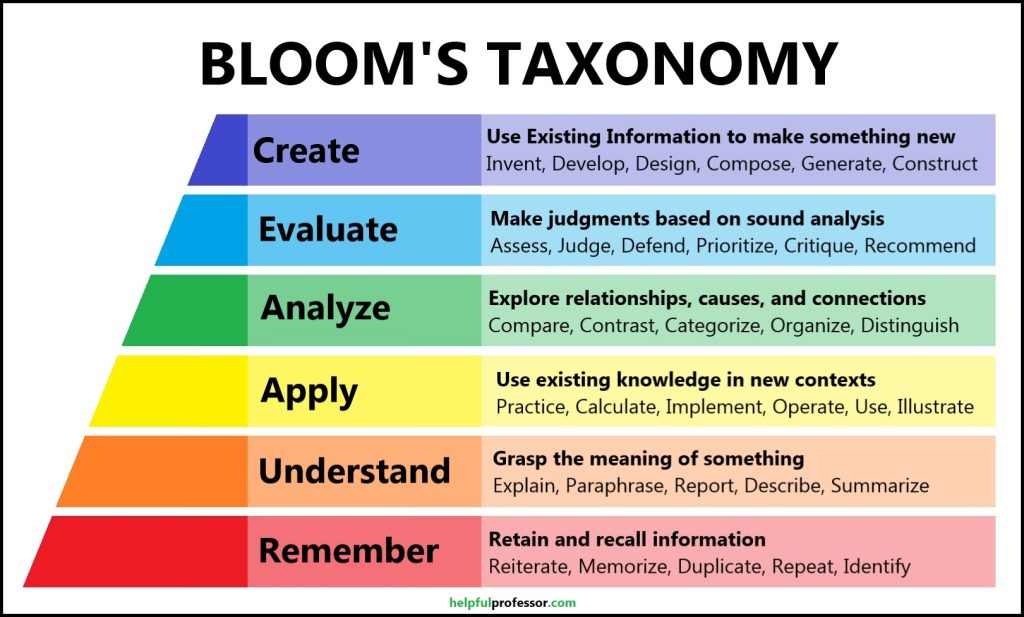
Here’s a full outline of the taxonomy in a table format:

- Chris Drew (PhD) https://helpfulprofessor.com/author/chris-drew-phd-2/ 10 Reasons you’re Perpetually Single
- Chris Drew (PhD) https://helpfulprofessor.com/author/chris-drew-phd-2/ 20 Montessori Toddler Bedrooms (Design Inspiration)
- Chris Drew (PhD) https://helpfulprofessor.com/author/chris-drew-phd-2/ 21 Montessori Homeschool Setups
- Chris Drew (PhD) https://helpfulprofessor.com/author/chris-drew-phd-2/ 101 Hidden Talents Examples
2 thoughts on “33 Critical Analysis Examples”
THANK YOU, THANK YOU, THANK YOU! – I cannot even being to explain how hard it has been to find a simple but in-depth understanding of what ‘Critical Analysis’ is. I have looked at over 10 different pages and went down so many rabbit holes but this is brilliant! I only skimmed through the article but it was already promising, I then went back and read it more in-depth, it just all clicked into place. So thank you again!

You’re welcome – so glad it was helpful.
Leave a Comment Cancel Reply
Your email address will not be published. Required fields are marked *

IMAGES
VIDEO
COMMENTS
Write the Body Paragraphs First. With your outline in place, begin writing the body paragraphs. Each paragraph should start with a topic sentence that introduces the main point, followed by evidence (quotes, examples, or facts) to support it. After presenting the evidence, analyze it and explain how it ties into your thesis.
A critical essay is a form of academic writing that analyzes, interprets, and/or evaluates a text. In a critical essay, an author makes a claim about how particular ideas or themes are conveyed in a text, then supports that claim with evidence from primary and/or secondary sources. In casual conversation, we often associate the word "critical ...
Written by MasterClass. Last updated: Jun 7, 2021 • 3 min read. Critical analysis essays can be a daunting form of academic writing, but crafting a good critical analysis paper can be straightforward if you have the right approach. Explore.
3. Take notes as you read your text. Taking notes as you read will help your to remember important aspects of the text, and it will also help you to think critically about the text. Keep some key questions in mind as you read and attempt to answer those questions through your notes.
A critique (or critical review) is not to be mistaken for a literature review. A “critical review”, or “critique”, is a complete type of text (or genre), discussing one particular article or book in detail. In some instances, you may be asked to write a critique of two or three articles (e.g. a comparative critical review).
Critical Essay Writing Tips. Writing a critical essay requires very careful analysis and the construction of an effective argument. If you are a naive writer or writing a critical essay for the first time, the following tips will help you write an effective critical essay. Be an Active Reader ; To write a good critical essay, the writer must be ...
Step 3: State a Thesis. Your critical essay should have a one-sentence thesis with two components: a claim and details sustaining it. Based on the information you’ve gathered from the subject of evaluation (a book, a movie, etc.) and secondary sources, write a thesis that will specify your essay’s direction.
Organize Your Thoughts. After your critical reading, take time to process and structure your ideas. Review your notes, looking for recurring themes or patterns that emerge from the text. Group related ideas together to start forming the basis of your argument. Consider different perspectives on the subject.
A critical essay is an analysis of any piece of text. It can be a book, a movie, an article or even a painting. The main point of this type of an essay is to interpret text or position it in a wider context. For instance, if you write a critical analysis of a book, you may analyze the tone of its text and find out how it influences the overall ...
33 Critical Analysis Examples. Critical analysis refers to the ability to examine something in detail in preparation to make an evaluation or judgment. It will involve exploring underlying assumptions, theories, arguments, evidence, logic, biases, contextual factors, and so forth, that could help shed more light on the topic.